

The Netherlands by Train
Gerrit Vandenberg
Gerrit shares his love for the Netherlands from his home near Amsterdam, helping thousands plan unforgettable trips to the lowlands. Discover his inspiring journey "From a critical health scare to celebrating Holland's charms" . If you want to send Gerrit a quick message, you can contact him here .
Disclosure: This article has affiliate links. As an Amazon Associate, I earn from qualifying purchases. It costs nothing extra, but you'll help keep my content free. It's a win-win!
WANT TO SAVE THIS ARTICLE?
Enter your email below & I'll send it straight to your inbox!
And each week, I'll send you new tips to plan your Netherlands vacation. If you decide it's not for you (any longer), unsubscribing is always just a click away.

Hi, I'm Gerrit
I enjoy sharing useful tips about the beauty of this county.
Wondering what it’s like to travel in the Netherlands by train and how it works?
Then this post is for you. As a Dutch local, I grew up with the train system and how it works. And as a travel planner and private guide I also know how visitors experience the train system in Holland.
You might have heard train travel in the Netherlands is easy and the best way to get around, making day trips easy. But if you’re unfamiliar with using trains, or in your home country it might not be as safe, I can understand your doubts.
So let’s talk about it. In this article, I’ll cover safety, how the train system in Holland works , how to enter the station, how to board a train, frequencies, class of travel, different types of trains (and why that’s important), different train operators, quiet zones and more.
Believe me when I say the train connects Amsterdam to many great places like Haarlem , Rotterdam , Delft , Utrecht , and Amersfoort , and it is safe to use. Why not add one or a few to your itinerary and go beyond the canals?
What I do not cover in this article is train tickets. That topic deserved its own post, and you can find it here: Train Tickets Netherlands: Buy Your Train Tickets 🎫
Welcome aboard this blog post, where we will explore travel by train in the Netherlands.

Table of Contents
Why take a train in the netherlands.
Good question. And the answer is for a few good reasons :
- Train travel in the Netherlands is often quicker than road travel.
- It’s socially accepted and used by all levels of society.
- It is more comfortable than dealing with traffic.
- You don’t have to deal with finding a parking spot .
- No parking fees (which in Amsterdam is €7.50/h, 24/7).
One fact not many people know when they think about The Netherlands is that it is one of the most populated countries in the world .
Yes, the land with open green fields, cows grazing, windmills, tulips, and lovely people in wooden shoes is, in fact, one of the richest, most urbanized, and densely populated countries in the world.
Thankfully due to rigorous and efficient urban planning , we are still enjoying those beautiful old cities and open spaces that most people envision. It’s all here.
But because it’s so densely populated roads are pretty much always busy and jammed around the major cities like Amsterdam, Rotterdam, Utrecht, and The Hague.
And that’s where the train comes in.
It bypasses all traffic , you can just sit back, enjoy a book, the view, conversation, or get some work done (there is free WIFI onboard almost all trains) until you get to your next destination fast.
How To Plan Your Journey By Train
You can use the NS app on your phone (available for both Android and iOS ) or the NS website to plan your journey. Both are available in English.
The Lowest Priced And Most Flexible eSIM cards (incl. tethering)
Stop searching for WI-FI; get an affordable eSIM for the Netherlands. From just $4.50 for 1GB, but I recommend at least 10GB . TIP: Get the App for easy top-up.

It’s as simple as entering your departure and arrival stations and clicking search to find the next departures. Of course, there are also options to change the date and time to look for future trips.
A great feature of the app and the website is that it shows a train busyness indicator . Of course, it’s not always correct, but it gives you a sense of which trains (times) will be busier than others.
If you do a last-minute lookup when you’re already at the station, you can get up-to-date platform information right within the app.
6 Steps To Become an Expert Using Dutch Trains

With the easy-to-follow 6-step process below, buying your ticket and making your train journey as smooth and easy as possible will be a breeze.
Step 1: Getting a Train Ticket
There are many different train tickets , like one-way tickets and day returns.
In general, train fares are fixed , but some discounts are available, like group tickets, and other discounts like “Book Early and Save” when you purchase in advance and travel outside of rush hour.
There are also many different ways to buy your ticket: from the ticket desk (if there is one), the ticket machine, tourist ticket providers, paying with your contactless bank card (OVpay), and the infamous ov-chipkaart (which you do not need), or via the official railways app or website.
The first three incur a €1 surcharge. So avoid them. The ov-chipkaart is terrible for visitors , I don’t understand why bloggers still recommend them (I guess they haven’t updated their post) because the card is entirely redundant today. This chip card costs €7.50, and you need a travel credit of at least €20, which was almost impossible to get back.
The advice out there to buy an ov-chipcard if you plan to use public transportation a lot is the stupidest advice I’ve ever heard. Please don’t do it. I promise other options are much better and friendlier for the wallet.
On the other hand OVpay (paying directly with your contactless debit card or credit card like Visa or Mastercard without the need for a ticket), or getting a ticket via the app or the website are all great ideas and the most cost-effective.
Locals tip: Prices for International Train Tickets are NOT fixed and go up fast. One of the best ways to save money is to book in advance. But even on domestic trips, you can save money on many trains with the “book early and save” option.
To keep this post consistent, I wrote a separate post on train tickets in the Netherlands to explain everything and which method is best for whom.
Step 2: Checking In At The Train Station
Once you’ve secured a ticket, you must enter the train station . This is how that works:
Most larger stations like Amsterdam and Rotterdam have entry/exit gates (barriers, like a turnstile) . This is how you open them:
- Tap a physical ticket at the gate for entry, and do the same when you want to leave the station.
- With a contactless debit or credit card (one person can travel on one card), it works the same. Tap it.
- You can scan the QR code for entry and exit if you print a ticket with a printer on the website.
- If you have downloaded your ticket to the app, open the app , go to more > my tickets > scan the QR code at the barrier.
Not all stations in the Netherlands have entry barriers . Instead, they have open, accessible platforms. For example, Schiphol Airport station doesn’t have them if you travel between Amsterdam and Schiphol.
At stations like this, you use the check-in/check-out poles instead.

If you have a printed ticket or use the app (a QR barcode), you can ignore these check-in/check-out poles and board the train directly.
If you have a physical ticket or use a bank card , you MUST check-in (and check out when you arrive) at one of these poles to activate your ticket.
International train tickets also come with a QR barcode to open the barriers and work the same as domestic train tickets. In other words, you can ignore the check-in/check-out poles.
Step 3: Check Your Platform
Once you’re inside the station, double-check the screen for your train, there can always be a last-minute cancelation or track change.
T he departure monitors (or the app) provide the most up-to-date and accurate information.

Once at the platform, there are digital signs as well, with the final destination of the train listed, the type of train (more about that later), and the stops it will make along the way. Check it to make sure you’re indeed boarding the right train.
Step 4: Decide What Type of Train to Take
Logical for locals, but not so much when visiting: Do you take an Intercity or Sprinter train?
This is the difference:
- Intercity Trains : Ideal for direct, fast journeys with fewer stops and comfortable seating.
- Sprinter Trains: They stop everywhere. They are used for local transportation mainly.
The train type is listed on the monitors in the top right corner.
My Favorite Travel Books
I love how Rick Steves' guidebooks offer a traveler's perspective. This is my favorite Amsterdam guidebook by far! Rating 4.8/5 on Amazon.

Click here for more Netherlands book recommendations . (travel books, art books, language books, and maps)
You usually cover most of your journey with a direct train (Intercity, for longer trips). You may need a Sprinter train to get to an Intercity station or for the final leg if your final destination is not an Intercity station. For shorter journeys, you might use a Sprinter for the entire trip.
Both train types have free WIFI and toilets on board. Both also offer two travel classes (more about that later). The difference is comfort in seating and speed of travel. Prices are the same for both.
For example, traveling relatively longer distances between Amsterdam and Utrecht, Leiden, The Hague, or Delft, you will travel on a direct Intercity Train.
When you travel shorter distances like to Zandvoort (beach), Zaanse Schans, et cetera, you will travel on Sprinter.
The travel time is short if you travel between Amsterdam and Amsterdam Schiphol Airport or Haarlem. On these legs, it doesn’t matter which train type you take. Just take whichever comes first.
For longer journeys, always choose the Intercity over Sprinter for more comfort.
Trips Between Amsterdam and Rotterdam
Travel between Amsterdam Centraal and Rotterdam Centraal is a little different, there are two extra train types:
- Sprinters Trains (normally you don't use them)
- Intercity Trains (taking about 1 hour)
- IC Direct Trains (small supplement, but travel in half time
- International High-Speed Trains (not meant for domestic travel)
For most people, IC Direct is the train to choose . Learn more about the differences in my post " How to get from Amsterdam - Rotterdam. "
PS: the only reason you might want to take a Sprinter all the way, also for longer trips, is when you’re in a wheelchair .
Sprinters have low-level entry, making it a breeze to board yourself. On an Intercity train, you must book (free) assistance in advance since these trains have a small entry stair.

Step 5: Board A Dutch Train
Boarding is straightforward , but there are a few essential things to know .
On the outside of the trains, you see numbers printed near the doors : 1 or 2. They refer to the travel class in that compartment.
If you’re not traveling first class, avoid the doors with number 1 for speedier boarding.
You also see some windows have banners with “ Stilte/Silence .” These compartments exist in both classes and are self-explanatory.
Still, many people plunk themselves down without looking at them and happily start a conversation, sometimes even on speakerphone. Please, don’t let this be you. Be considerate and be quiet.
Another helpful tip is that the train doors don’t open automatically.
At busy stations, you can usually wait for other people to open the door (either those exiting or boarding). But if you’re the only one, you must do it yourself.
If the door does not open, it is not broken. All you need to do is to push the round little button next to the door. Sprinter trains have this button in the middle of the doors.

Step 6: Find The Right Seat On A Dutch Train (Travel Class)
Dutch trains have two travel classes. First Class and Second Class . First Class seats are red. Second-class seats are blue. They’re easy to distinguish this way. There are also markings above the doors and outside the train.
I recommend First Class for journeys of more than 30 minutes. You’ll have wider seats, more legroom, usually better power outlets, and it’s quieter than 2nd class.
If you’re in first class with a second class ticket, if you’re lucky, you will be asked to move, but the conductor can also give you a fine for €50 and the fare difference. Don’t take the risk. Take the right seat .

PS: if you travel with your contactless bank card or a group ticket, you must travel in second class . With these tickets you can not upgrade to first class.
I recommend booking a ticket via the NS website because that allows you to choose between the two classes. You can read more about when to select a first class in my post on train tickets in the Netherlands.
Other Carriers And Using a Physical Ticket
As long as you travel with one train carrier, most likely with NS, you only tap at the start and end of your trip .
Generally, when you transfer on a different train , you do not need to tap, again until you reach your final destination.
NS is the largest operator in the Netherlands, and their trains can be recognized by their yellow and dark blue colors. The trip from the Airport to the city is always with NS.
But other train carriers exist on smaller lines, often in the country’s North, East, and South.
These trains are differently colored and operated by companies like Arriva, but there are more. If you transfer to one of these, you must tap out with NS and tap in with the other carrier IF you have a physical ticket.
TIP: this DOES NOT apply if you travel with a printed ticket or a ticket you have in the app (both use a QR barcode).
If you have a physical ticket from the ticket desk or the machine, you must check out and check in when you transfer between carriers .
This is often clearly signposted on the platform —and extra marked by the coloring of the checkout gates. This will only be important to you if you travel to the outskirts of the country.
For 99% of tourist journeys , this will not be applicable. But I want you to know, just in case.
This will happen, for example, if you take the train to the Kröller Müller Museum where the leg between Amersfoort and Barneveld station is with another carrier. Or when you go to the touristy town of Valkenburg (known for its underground Christmas markets) in the south.

Luggage on Trains in the Netherlands
There are no limits to how much luggage you can take on the train as long as you do not block other seats.
There is a baggage rack above the seat (like above an airplane seat but then open), and space is under your seat. Neither fits a suitcase. You could keep 1 suitcase next to you if you sit strategically, but not more.
Large luggage can be left in the hallway, but there is a theft risk since it’s right next to the doors. There are “jump” seats in the hallway, so you could stay there with your suitcases (that’s a 2nd class seat).
Note that although 1st class compartments have more space to sit. You don’t necessarily have more space to store your luggage there without blocking other people’s seats, which is NOT allowed.
Everybody in 1st class has a more expensive ticket, and they should not be bothered by luggage standing in the way or having no access to a seat because of it.
If you travel with a lot of luggage (more than one item that doesn’t fit in a small rack above your seat, like a suitcase – for your entire party), I recommend against booking a 1st class ticket and getting a 2nd class ticket instead.
Then, stay in the hallway (2nd class) with your luggage.
If you want comfort and not having to deal with luggage on public transportation, which is a hassle, especially with suitcases, you are better off booking a private driver. Here is a company I recommend that charges less than a regular taxi, and you have a choice of vehicles.
My Favorite Private Driver Booking Tool
Book affordable transfers between cities with a private driver . You'll save significantly over regular taxi fares. Plus, it's pre-booked and door-to-door.

Frequently Asked Questions
Am i bound by a specific train departure time.
For all domestic train journeys, you’re not. If you have a full-fare ticket, your ticket is valid all day. You can take any train. Dutch tickets are date-specific, not departure-specific.
That means you can take another train without worry as long as it is on the same day. (It is also great for when you miss your intended departure time, take the next train).
Just be aware that if you have a discounted ticket, you must travel off-peak. That means you can not be a train during weekdays between 6:30 a.m. and 9 a.m. and between 4 p.m. and 6:30 p.m. Weekends are always off-peak.
Internationally, it’s a little different. For IC Brussels, you can take the next departure without difficulty. For all other trains, you need to re-book, depending on your ticket terms, that can be easy or difficult (read expensive).
Do I need seat reservations on trains in the Netherlands?
On domestic journeys, it is not possible to reserve a seat. Departures are frequent, and usually, there is space to sit for everyone. But at peak moments, sometimes people need to stand. Try to travel off-peak when you can.
For International trains, this is a little bit more complicated. For example, on all high-speed train lines (like ICE to Germany and the Thalys train from Amsterdam, now called Eurostar), you always need a seat reservation, which will be part of your booking procedure.
For regular-speed trains, it varies. Night trains require a reservation. On the IC Berlin train, it’s optional (but included for 1st class passengers). I highly recommend also 2nd class passengers paying for a seat because the train can become full at any time of the day, and it’s too far to stand.
The train between Amsterdam and Brussels (the regular IC Brussels service) again doesn’t have seat reservations.
Tip: the train from Amsterdam to Brussels is always crowded. It’s worth buying a first-class ticket. Use the busyness indicator on the website to find the correct departure and avoid rush hour travel when possible.
How do I know where to get off the train?
Announcements are usually made in Dutch only, except for trains arriving at Amsterdam, the Airport, and a few other large stations where statements are also in English.
However, every train has TV monitors next to the doors that update you with easy-to-understand information about the journey like the following stations, arrival times, et cetera.
You can also use the train app to follow your own journey live. Find it first with a regular search, select the train you’re on, and then click it for more details. You see it moving live on a map.
Once you arrive at a station, you can see the station’s name from the window.
Locals tip: I like to set an alarm for 5 minutes before my scheduled arrival time. That way, I’m alert and not taken by surprise. Having to scramble to get my stuff together.
Do I need to switch trains in the Netherlands?
Many cities have direct connections with Amsterdam. Changes are small you have to transfer. But sometimes, being willing to transfer allows for more departures, and it is easy.
Again, use the app. It gives you the information you need. If under changes, it says 0 your train is direct.
When you see another number that means the number of transfers.
Just click that departure, and it tells you which platform your train arrives on and which platform your next train departs from.
Often, this is at the same track, or just the opposite, but always check.
How much time do I need if I switch trains?
The app will calculate this for you. But in general, the rail network is very reliable. Trains often arrive on time, against popular belief. A transfer time of 5 minutes is usually already enough.
Or allow some extra time, enjoy the many shops and restaurants most larger stations have, and then take the following train.
Are Trains in the Netherlands Safe?
Yes, it’s safe to travel on Dutch trains. But as always in big cities, you must be aware of your surroundings and monitor your belongings.
The most significant risk you face is petty theft, usually when people are ignorant about their belongings.
Especially tourists, because they’re too busy looking outside and enjoying a happy holiday. Keeping an eye on your stuff is most of the battle.
That means keeping your luggage with you. Refrain from letting strangers distract you, especially if you’ve put your luggage on the upper racks.
When you leave your luggage in the hallway (oversized luggage), stay there throughout the trip.
On the rare occasion you witness a crime, try to take a photo and call 112. Do not get personally involved.
On that note, if a nuisance is not life-threatening, DO NOT CALL 112 (The European version of 911). Instead, text train security via WhatsApp (+31 6 13 18 13 18).
Mention the train you’re on. Include where you boarded the train, where you’re going, and the compartment number (above the door). They’ll send the conductor or police if needed.
Every Coffee ☕️ Counts!
Do you appreciate this article? Consider a coffee donation ☕️ to support this website’s upkeep. Every contribution matters and is deeply appreciated. Thank you for your generosity !
Does All Of This Feel Overwhelming?
Planning a trip well is a lot of work and can feel overwhelming. Know I’m here to help when you need assistance with your Netherlands vacation.
I offer Itinerary Consultations , where I help you improve your itinerary and make your trip planning much faster and less stressful.
Even if you already have a plan, I have local insights you don’t get from a guidebook. Is that truly a nice restaurant? Is your plan efficient or even doable? What to do once you’re inside a museum. The Rijksmuseum is massive. A call is also great if you doubt which options to choose. I can genuinely personalize my advice to you.
Do this post helped you?
I’d love your thoughts: What city would you like to visit by train? . Please share your thoughts in the comments below, and let’s start a conversation 💬.
Final Thoughts
I hope this practical guide on train travel in the Netherlands was helpful, making using the system less intimidating.
It motivates me a lot if you leave a comment below. Did you learn anything new today?
If this post was helpful you might want to consider sending me a coffee . I’d be really thankful and you directly help with the operational costs of this website.
Read my other article about buying train tickets with a step-by-step tutorial on how to buy train tickets via the NS website (the best way, and remember, if you get your ticket in advance you might qualify for a discount).
And don’t forget to use the app to plan your journeys and look up train schedules.
Handy Travel Guides To Travel Between The Most Important Cities
- How To Get From Amsterdam To Den Bosch 🚉
- How To Get From Amsterdam To Haarlem 🚉
- How To Get From Amsterdam to Maastricht 🚉
- How To Get From Amsterdam To The Hague 🚉
- How To Get From Amsterdam To Rotterdam 🚉
- How To Get From Amsterdam To Utrecht 🚉
Leave a Comment Cancel reply
Save my name, email, and website in this browser for the next time I comment.
- Français

The Netherlands by train: easy and comfortable
The train could very well be the most enjoyable means of transport for your travels through the Netherlands. No matter your destination in our country, the train will get you there. From Amsterdam to Groningen, Maastricht to The Hague: just hop aboard! Take a look here for all the top tips.
- A well-organized and extensive rail network.
- All of the Netherlands is accessible by train.
- Modern, comfortable and affordable.
You’re probably already aware that the Netherlands is a fairly small country. This provides great opportunities for travelers because, unlike larger European tourist destinations such as France, Spain or Italy, you can reach the other side of the country within two hours. All you have to do is hop on the right train, enjoy the view out the window, and relax until you reach your destination. It takes no more than half an hour to reach the city of Utrecht from Amsterdam, for example, or 50 minutes to The Hague Central Station.
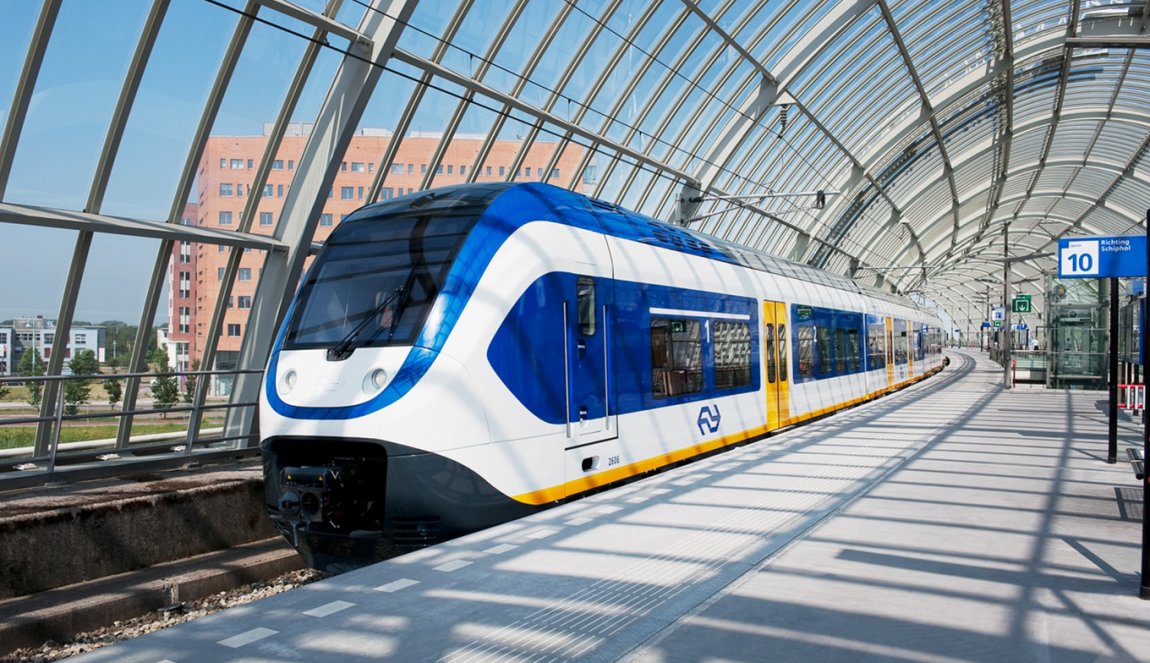
Not only does the Netherlands boast a very extensive rail network, the trains themselves are really modern. The train cars are spacious and the seats are comfortable and roomy. They are almost always equipped with a digital display showing the latest news, route and train schedule information, and the newest trains often have USB chargers. Wi-Fi is usually available, but it could be improved; the network is often slow, overloaded or not secure.
It’s usually not too crowded. The exception to this is during rush hour, especially on popular routes like Utrecht-Amsterdam or Rotterdam-Amsterdam, where you are not likely to get a seat if traveling at around 8:00 am. Delays also occur (especially during rush hour), but generally these do not last more than 25 minutes or so. The larger platforms usually have a kiosk or catering facility where you can buy a cappuccino or freshly baked croissant while waiting. Trains run late into the night, and large stations have night trains – ideal for a night of hitting the clubs.
Noteworthy: visit Soestdijk Palace by train
One of the smallest stations in the Netherlands radiates a royal elegance. Soestdijk is a suburb of the town of Baarn and is mainly famous for being the location of Soestdijk Palace. This majestic building was home to members of the Royal Family for many years. The palace is surrounded by a beautiful forest where you can enjoy a lovely walk.
Paying on public transport
There are several ways to pay on public transport in the Netherlands . However, OVpay is the easiest option for visitors to the Netherlands. In fact, you only need your debit or credit card to check in and out, making it easy to travel across the country by train, tram, bus or metro.
OVpay provides a direct connection between your fare and payment account. It basically works the same as cashless payments in the supermarket. So if you are on holiday, OVpay is the most convenient and economical solution. You don't need a separate card, nor are you unnecessarily stuck with the cost of an OV-chipkaart or season ticket.
If you want to travel through the Netherlands by train, you need to buy a single-use chipcard or an anonymous OV-chipkaart (smart card). Traditional (paper) tickets no longer exist, although the single-use card could be considered as such. The single-use chipcard is perfect for travelers who only wish to use public transportation for a single journey. You can buy it at an NS ticketing machine or service desk. Note: single-use chipcards cost €1 extra per trip.
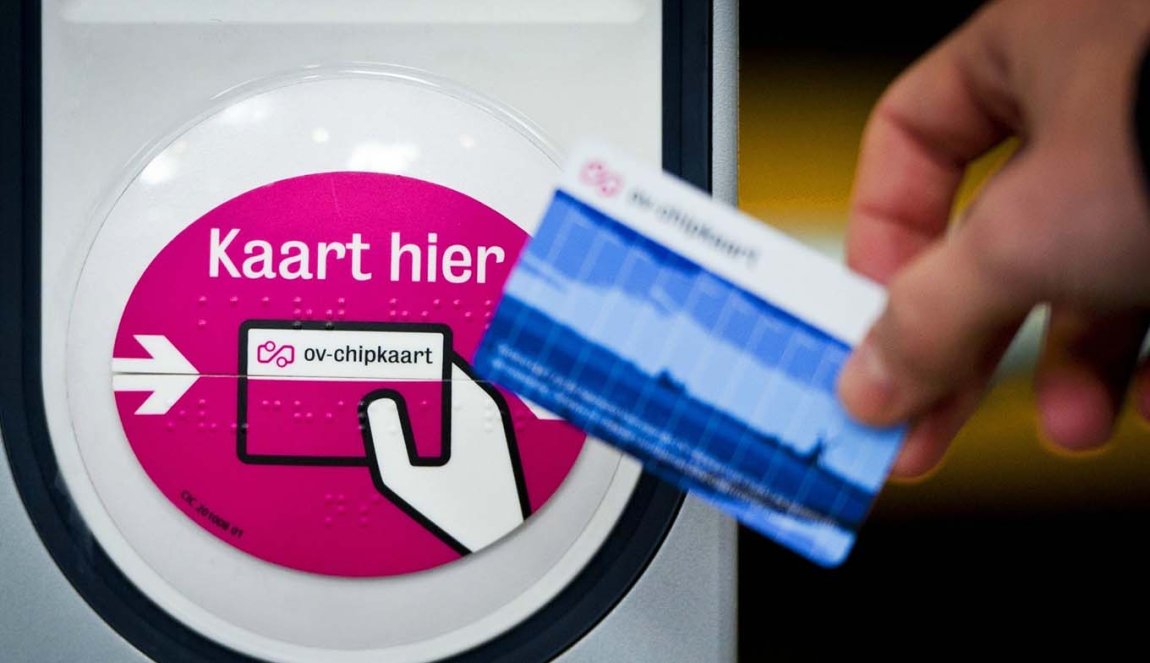
If you plan to use public transportation more often, we recommend buying an anonymous ‘OV-chipkaart.’ You pay a low, one-time fee for this card, which resembles a debit card, after which you can use it indefinitely. Since your card will not initially have a balance, you will first have to add travel credit at an NS ticketing machine. You need a balance of at least €20 to travel by train. Once funds have been loaded to your card, you can check in at the designated posts or turnstiles which are usually located close to or on the platform. Just swipe your card at the post or turnstile and you’ll be good to go.
Important: the NS (the National Railways) often has special offers or special day or weekend tickets. Check the NS website for offers. You can also use your OV-chipkaart on buses, metro or ferries.
By default, an OV-chipkaart and OVpay are aimed at 2nd class travel, however, if you wish to enjoy a bit more comfort you could opt for 1 st class travel. The seats are a bit larger there and the cars are generally quieter than in 2 nd class. Obviously, you have to pay a bit extra for that. You can switch classes on your OV-chipkaart at an NS ticketing machine. With OVpay, you can only travel 2nd class.
If you buy a single-use chipcard or e-ticket , you can choose to travel 1 st or 2 nd class while purchasing your ticket.
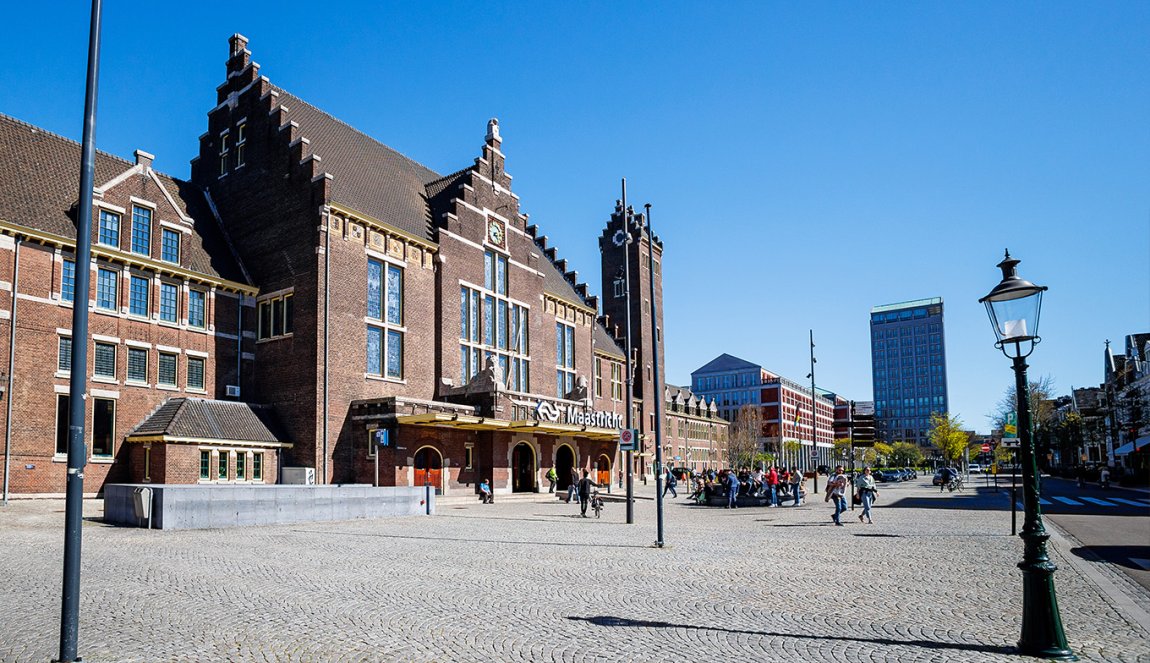
The wonderful thing about the Dutch rail network is that you can travel almost anywhere. Our country has about 400 train stations in all shapes and sizes. There are historic stations like Haarlem Central or Leiden, tiny stations like Velp or Eijsden, and large stations in Amsterdam and Utrecht.
The facilities differ per station, but of course every station has an NS ticket machine to top-up your OV-kaart or to buy other tickets. Large stations also have a service desk for questions and advice.
Tip: 9292.nl
The Netherlands has organized its public transportation in such a way that bicycles, buses, metros, trams and trains are coordinated as much as possible. The idea is to take a train to a large city and from there take the bus or metro to the city center or a place of interest. A handy site to help you on your way is 9292.nl (also available as app for Android and iOS). Fill in your starting point, ending point and departure time, and the site will give you a complete time schedule including the mode(s) of transportation. It’s a smart way to travel!
Stations in the Netherlands
Your privacy settings.
By loading the photos, you accept that Holland.com uses cookies to share data with third parties as described in our privacy statement (holland.com/privacy).
Taking the train from Amsterdam to…
There a many special sites to visit in the Netherlands. These are easily accessible without having to switch trains! From Amsterdam you can travel to…
Maastricht is known for being the capital of culinary delights in the Netherlands. This city, located in the southernmost tip of the province of Limburg, boasts historical squares and lovely lanes, but it’s the fabulous, charming restaurants you won’t want to miss. And while you are there, you really must try a scrumptious slice of vlaai (Limburg-style pie).
Deventer is one of the five oldest cities in the Netherlands. Being one of the smaller Dutch cities, this Hanseatic town offers visitors a charming and intimate city center. It is home to the oldest brick house in the Netherlands and the beautiful Gothic Lebuïnus church. There are numerous terraces in the vicinity of the Grote Markt (the main market square), so chances are you will end up there for a refreshing beverage. Note: If you travel to Deventer by public transportation, you will probably have to switch trains along the way (which is very easy), however, the international train to Germany goes there directly.
Arnhem is the capital of the province of Gelderland and it shows. The newly redeveloped train station is a modern and architectural marvel. From there, it will take you no more than five minutes on foot to reach the many shopping streets and the Korenmarkt square, the city’s ancient bustling center with loads of cafes and restaurants.
But there is more to Arnhem than that, such as ArteZ, the University of the Arts, which has turned the city into a hotbed of creativity. This is especially evident in the lively Spijkerkwartier district and the 7Straatjes (7 Streets).
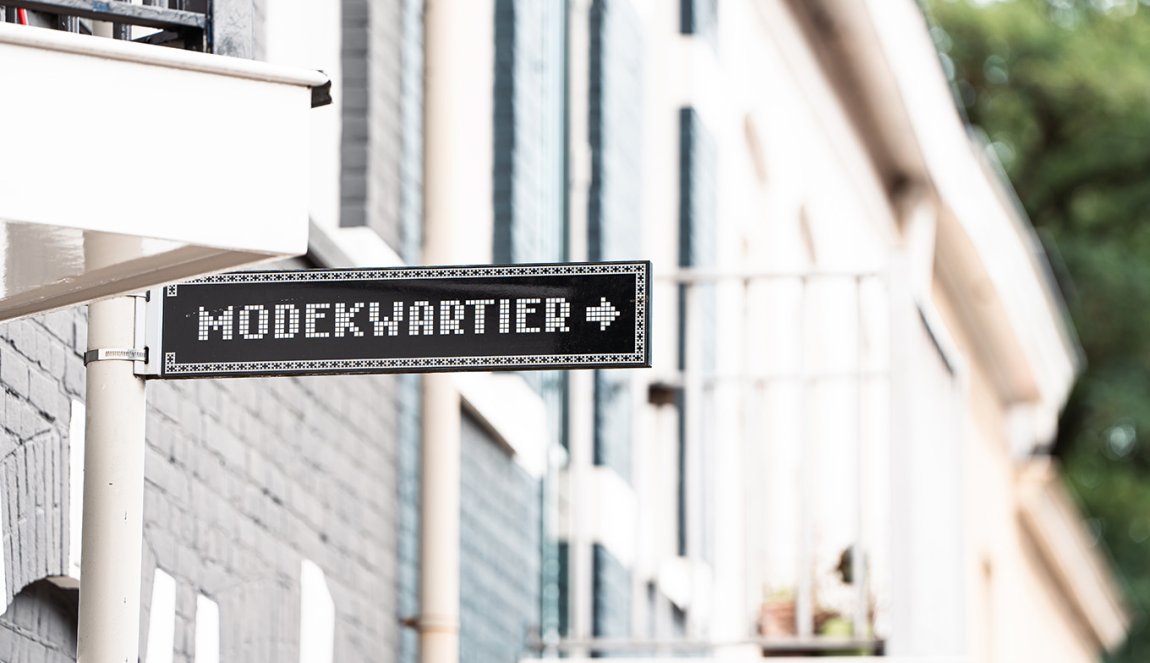
Arnhem - A city of history, culture and creativity
From fashion and design, great shopping and cultural hotspots to fantastic restaurants and lush green spaces, Arnhem has it all.
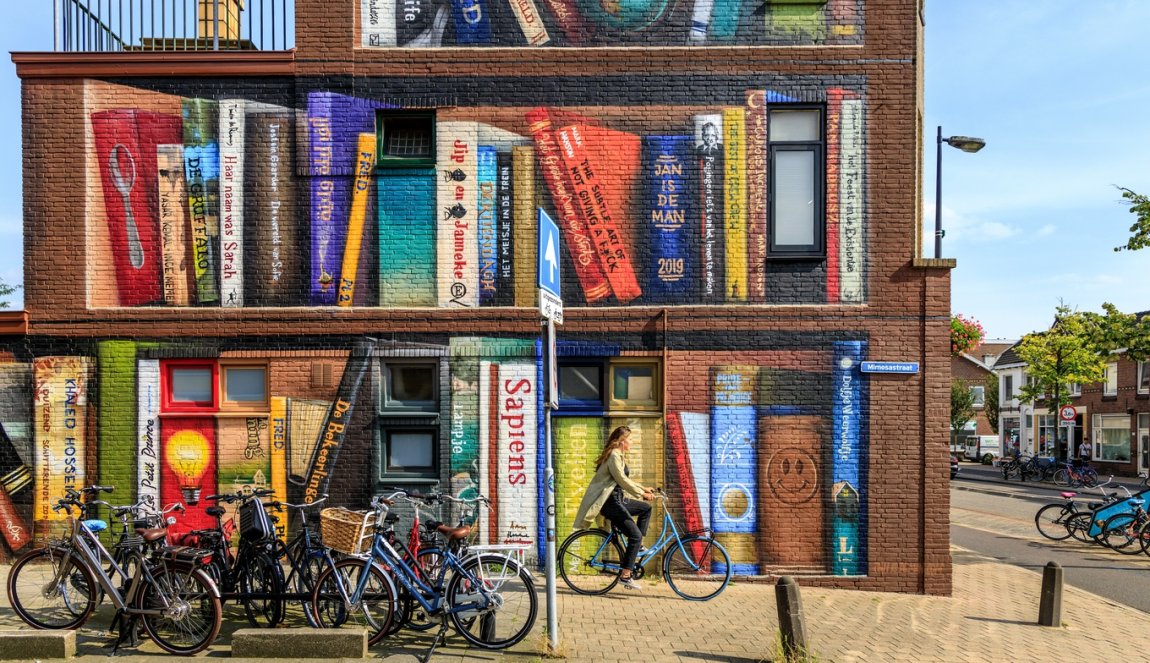
If you love to shop ‘till you drop, you should definitely add the city of Utrecht to your bucket list. Utrecht’s Central Station is the largest in the country and it seamlessly merges with Hoog Catharijne, an elegant and large (indoor) shopping mall. For years, visitors considered this mall to be ugly, crowded and dirty, but after an extensive renovation, it emerged as a shopping boulevard with international allure: Visit the new Hoog Catharijne and it feels like you could be in New York!
Once you exit Hoog Catherijne, you find yourself in one of the most charming cities in the Netherlands, with beautiful canals as the cherry on the cake! Many travelers now prefer Utrecht to Amsterdam for a longer stay. Why? Because it’s just as charming but less crowded.
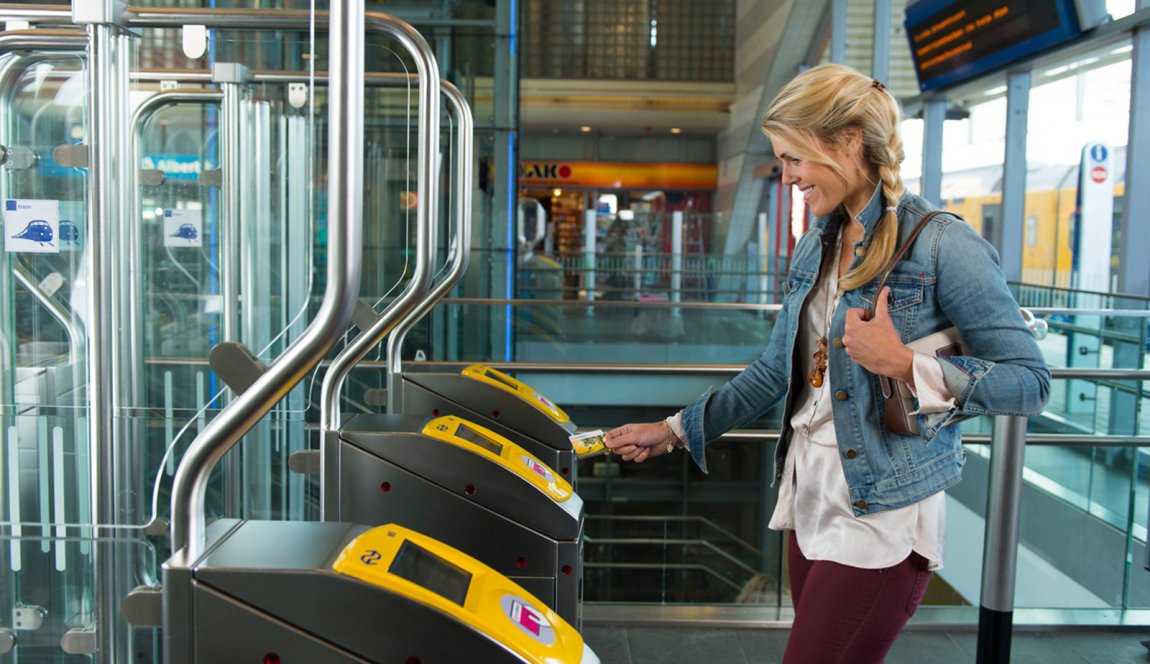
Paying for public transport (OV): travelling everywhere
Easy check in and out with OVpay or the OV-chip card.
Did you find this interesting? Discover more
How To Travel By Train in The Netherlands
This page may contain affiliate links which earn us a commission at no extra cost to you to support the site. Thank you!
In a country as small as the Netherlands, you can quickly and easily visit more than just one city. Amsterdam’s lovely and all, but the Netherlands has so much more to offer! If you want to explore more of the Netherlands, using the train is probably your best option.
But how does the Dutch train system work? Can I easily use it if I don’t speak Dutch and is there any way to get a bit of a discount? Having grown up in the Netherlands and having used more trains than I can count, I feel pretty confident giving you this guide on how to travel by train in Holland. Plus some useful insights of my boyfriend, who has travelled by train in the Netherlands as an Englishman 😉
How To Buy A Train Ticket In The Netherlands?
To use the train in the Netherlands, you need to either buy a loose ticket or use a public transport smart card (OV-card). Let’s start with the single or return tickets. You can buy a ticket at one of the ticket machines at the station. If you don’t feel particularly confident in using a machine, you can always purchase a ticket at the service desk.

Using one of the ticket machines is easy and pretty straightforward. Select whether you want to purchase a single (enkele reis) or return (dagretour) ticket. You are then asked to type in the first few letters of your destination, and it will show up for you to select. Luckily, there’s also an English version on the machines. Simply click “English” for the text to be translated into English.

Keep in mind that you do not get a discount for buying a return ticket (like you do in the UK). A return ticket is simply the price of two single tickets combined. You will, however, save €1 by getting a return ticket as you only have to pay for the administration costs once.

This is a return ticket from Tilburg to Rotterdam. In the top right, you can see the date on which you can use the ticket. Next to the date, you will find whether you are travelling first or second class (Klasse 1/Klasse 2). On the next line, you can see whether you bought a single ticket ( enkele reis) or a return ticket (dagretour ) and between which two stations you are travelling.
You always have to check in and out when travelling by train, even when using a single ticket. A little reminder is printed on your ticket underneath the stations. Lastly, you can see the price (prijs: €27.40) and the service charge for buying an individual ticket (toeslag: €1.00 ). They’re a little faded on this used ticket – my bad!
OV-Card (Public Transport Smart Card)
When you live in the Netherlands or if you’re planning on using the train A LOT during your trip (more than 7-8 times), you might want to look into getting an OV card. This Public Transport (Openbaar Vervoer/OV) smartcard can be topped up with money and used to travel on any public transport in the Netherlands (train, bus, tram).
Personal OV Card
There are two different types of OV-cards, a personal card and an anonymous one. The personal OV-card is linked to one individual and is only available for people who live in either the Netherlands, Belgium, Luxembourg or Germany. If you’re an expat living in any of these countries, you can get a personal OV-card.

Anonymous OV-card
The anonymous card (blue instead of yellow) works similarly to a personal card, but they are not linked to an individual and can be used by residents of any country. Because they are anonymous, you can’t put any monthly/weekly passes onto it. But it also means that this card can be used by more than one person. The main reasons to get an anonymous OV-card as a traveller is convenience when using multiple forms of public transport, or saving a tiny amount of money when using the train more than 8 times during your trip.
Instead of having to buy individual tickets every time you want to use a train, tram or bus, you can simply tap in and out with an OV-card. You also won’t get charged the €1.00 service fee when travelling by train. As the OV-card costs €7.50, you can save a little bit of money by using it often. You can buy an anonymous OV-card at new agency stores (like Primary and Bruna), or at the ticket machines and service desk at any train station. Keep in mind that the anonymous OV-card is valid for 5 years. If you’re planning on returning to the Netherlands it might be the perfect option for you!
How To Use A Train Ticket In Holland
After purchasing your ticket (or topping up your OV-card), you can go to the platforms (“ spoor ” in Dutch). Before being able to get there, you have to check in. You simply tap your ticket or OV-card onto the “check-in” spot before the gates, and they will open for you. When you’re using the OV-card, the machines will automatically take the correct amount of change off your card when tapping out at your destination.

Make sure to ALWAYS check in and out when using the train, even when using the single/return tickets. You will most likely only travel with NS , but sometimes you have to swap to Arriva trains. When swapping train providers, you will also have to check in and out.
You can use the NS website to check on which platform you can find your train. Or you can check one of the information displays at the station.

Things To Keep In Mind
Different countries have different etiquettes when it comes to travelling on public transport. Even though many of these are pretty straightforward in the Netherlands, some points might need a bit of clarification.
The Dutch don’t queue. Getting off or onto the train during rush hour is like the apocalypse, each man for himself. No, no, no. I’m being dramatic. But having lived in queue-loving Britain for five years, the none existence of queues before Dutch trains did hit a nerve…

The “house rules” of the train are common sense, really. Make sure you have a valid train ticket or have checked in your OV-card, put your luggage somewhere where it won’t bother other passengers, etc. Eating and drinking on the train are fine, as long as you keep it nice and tidy.
One thing that does need a little bit of attention is the quiet areas on the train. Certain parts of the train have the little silent sign (pictured above: first column on the second row). This means you should be quiet when travelling in these compartments (no phone calls, no loud conversations, etc.). You can find the sign at the door of the train compartment.

How To Get Cheaper Train Tickets
I wouldn’t be a good budget travel blogger if I didn’t give you some tips on how to get cheaper tickets, right? It’s not too easy in the Netherlands, unfortunately. Travelling by train in the Netherlands can be quite expensive. Many deals are hard to get if you’re not a resident, don’t speak Dutch or are only visiting for a short period of time. But here they are…
1. Cheap Day-Ticket
The NS sells day-tickets for €53. This means you can travel by train all day, no matter how many stops you want to make on the way. But €53 is a lot! That’s why certain shops (Albert Heijn, Kruidvat, Xenos, etc.) have discounted day-tickets on sale every now and then. They are usually between €15-€25. Sometimes, they come with rules like you’re only able to use it during the week or during certain periods of the year. Unfortunately, it’s hard to predict when and where you can get these cheaper tickets. One way of getting one of these cheaper day-tickets is to check second-hand websites like Marktplaats (the Dutch eBay) or on the FaceBook market place.
2. Group Tickets
Travelling with a bigger group (4-7 people)? The NS group ticket will save you some money on train tickets. Pay between €8 and € 5.21 per person – depending on how many people you’re travelling with – for a single journey outside of peak hours. For more information, please check the NS website (you can also order them from this website!).
3. Buy Entree Tickets To Tourist Attractions WITH Your Train Tickets
Via the NS Spoorweg Winkel (NS railroad shop) you can buy some fun travelling deals. If you’re planning to visit any tourist attractions like Madurodam, the Efteling, one of the Netherland’s many zoos or are looking for a train and hotel all-in-one deal, this is probably the best place to buy one. The NS sells entree tickets, tram and train tickets together with a discount. If one of these places is part of your itinerary, you might be able to save some money buying the tickets as part of a deal!
4. Check The “Cheap Train Tickets” Website
This one is for the Dutch-speaking tourists, or for those who are lucky enough to know someone fluent in Dutch. The Trein Reizigers (the train travellers) website will find you the cheapest option to travel by train in the Netherlands. Fill in your stations, your dates and with how many people you’re planning to travel with. It will then give you the best and most affordable option.
No Return Ticket Discount…
As mentioned before, you do not get a discount for buying a return ticket. In the UK, you usually get a bit of a discount for buying a same-day return. In the Netherlands, a return ticket is the price of two single tickets combined. You do save yourself €1 on administration costs if you buy a loose return ticket rather than two singles.

I hope that answers all your questions about travelling by train in the Netherlands. If you are unsure about anything train-travel related, please let me know in the comments and I’ll get back to you with an answer as soon as possible!
Looking for other exciting cities to visit in the Netherlands? Why not check out Eindhoven , Den Bosch , Rotterdam , Tilburg , and Maastricht ? Or check out the best castles in the Netherlands !
Save for later…
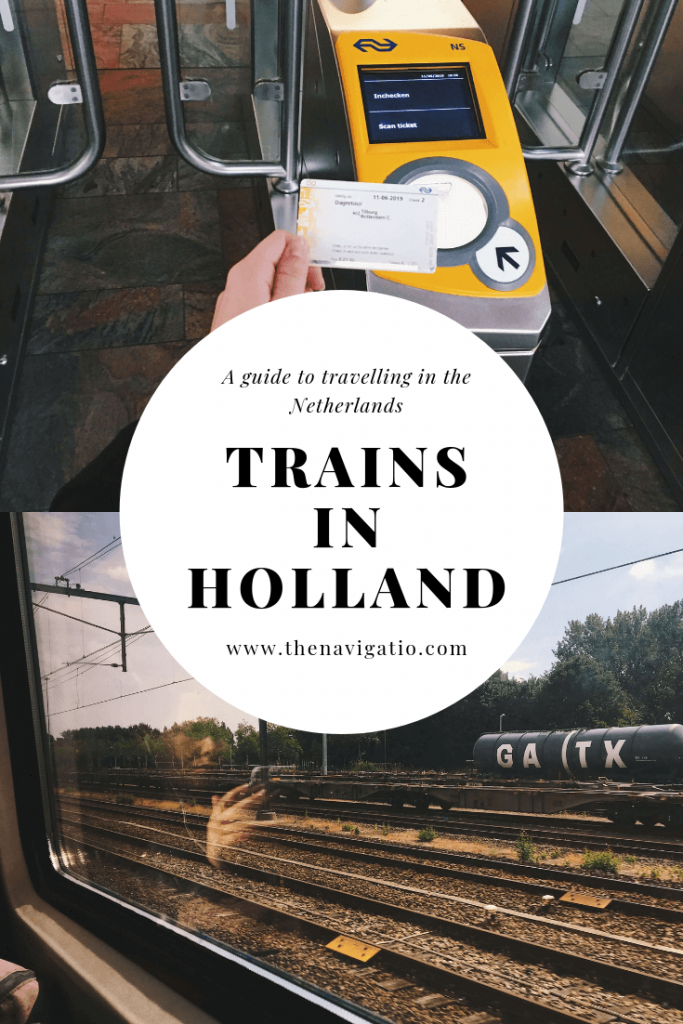
Nele (Nay-la) graduated from Manchester Metropolitan University with an English and Creative Writing Degree and has lived in the UK for nearly 10 years. She has had an interest in Japan and its culture for as long as she can remember. Since her first trip in 2018 surpassed all expectations, she has continued to return to Japan to explore more of all it has got to offer. You can read her full story here .
View all posts
12 thoughts on “How To Travel By Train in The Netherlands”
This is so helpful, I’m definitely going to bookmark it for my next trip and do a bit of train travel. Cora | http://www.teapartyprincess.co.uk/
Glad it was helpful Cora! 🙂
I have never been to amsterdam or the netherlands for that matters but would love to visit the city! and this guid would be so helpful to get around!
If you ever get the chance, definitely go and visit it ^_^ There’s so many lovely places to explore in the Netherlands 🙂
This is such an informative post! Thank you! I’d love to visit the Netherlands and although I’d mostly want to go to Amsterdam, I’m sure there’s plenty outside there I’d love to see too. The anonymous cards sound like a great option and although I’d be avoiding rush hour like the plague, I kinda love that it’s every many for himself haha! I hate queuing!
Jenny http://www.jennyinneverland.com
I think Amsterdam’s a really good introduction to the Netherlands 🙂 I’d always recommend people to go there 🙂 But for a second trip (or longer than a few days), I’d highly recommend visiting Utrecht or Rotterdam too (super easy to get to by train when you’re in Amsterdam) 😀
Hahaha, I really had to get used to the queueing here in England when I moved!
This is such a helpful and inclusive list! You really nailed it by answering all of the possible questions I would have if I were trying to navigate through the Netherlands. Great post, thank you for sharing!
Super glad to hear that! It’s always tricky to make sure you include everything when you’re so familiar with the subject – so I’m glad to hear that I’ve answered everything 🙂
such a helpful and informative post, I’ll definitely be re-reading if I book a trip to the Netherlands! x
Thank you Katy! If you ever need any help with it, feel free to message me 🙂
Very helpful. I had to take a train from Amsterdam airport to Leiden for a wedding and it was no hassle at all.
It’s definitely not hard 🙂 Sometimes I think it might get a bit confusing, especially if you don’t speak Dutch – but luckily there’s always people to help 🙂
Leave a Comment Cancel reply
This site uses Akismet to reduce spam. Learn how your comment data is processed .
Must-Read Articles

50+ Best Things To Do In Japan

Is The Japan Rail Pass Worth it?

The Perfect Three Week Japan Itinerary
Japan Travel Tips Group

The Japan Travel Newsletter
Sign up to get inspired! Receive insider tips, special discounts and more to plan your perfect Japan trip.
You have successfully joined our subscriber list.
japan travel Blog
Tokyo Kyoto Osaka Hiroshima Hakone Kobe Nikko Nara Kyushu All Japan Content
Plan Your Trip
Best Things To Do Japan Rail Pass 2 Week Itinerary 3 Week Itinerary Accommodation Japanese Phrases
About The Navigatio Work With Us
To the Netherlands by train
Choose a comfortable, fast and sustainable journey by train. NS International connects Europe with all major cities in The Netherlands. Make sure you visit Amsterdam, a vibrant city that invites exploration. Immerse yourself in a city that revels in culture and discover the many tourist attractions Amsterdam has to offer. Find train tickets
Search your destination in the Netherlands
Destinations in the netherlands, discover holland.
Book the best activities including public transport and make the most of your Holland experience.
Why NS International?
- Thousands of European destinations online
- Dutch and English customer service 24/7
- No booking fee online
- Pay online easily and safely
Train to Amsterdam
NS International connects Europe with all major cities in The Netherlands. Make sure you visit Amsterdam, a vibrant city that invites exploration.
Train to Utrecht
NS International connects Europe with all major cities in the Netherlands. When visiting, also come see historic Utrecht!
Train to Rotterdam
NS International connects Europe with all major cities in the Netherlands. When visiting, also come see modern Rotterdam!
Train to Eindhoven
NS International connects Europe with all major cities in the Netherlands. When visiting, also come see high-tech Eindhoven!
Related Content
Links to useful info, the 15 things most worth knowing..., the timetable:, going long-distance:, the intercity direct services:, taking bicycles:, detailed train guides, new overnight services:, journeys from amsterdam, using major stations in the netherlands, the main station in amsterdam, the main station in rotterdam, using travel cards instead of tickets:, discounted day tickets, child tickets:, international tickets:, using rail passes:, the detailed guide to buying and using tickets & rail passes:, please support showmethejourney, additional info for rail pass users:, pan-european travel guides, related resources.
- Cities & Stations
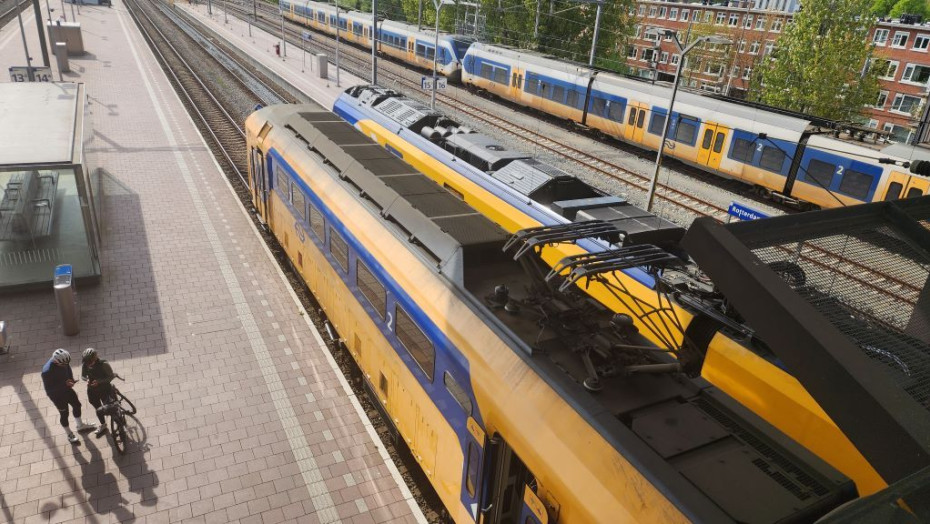
Netherlands by train
Welcome to the guide on how to save money, time and confusion when travelling in and from/to The Netherlands by train.
NS is the national rail operator in The Netherlands and how it operates the rail network makes exploring The Netherlands by train comparatively simple. Frequent trains link often spectacular stations, which are public transport hubs for the delightful cities and towns that they serve.
Ticketing for the national network is also comparatively straightforward and if you have a rail pass, you can use it to hop on and off trains to see multiple cities in a single day.
These are the fifteen things that are particularly useful to know about rail travel in The Netherlands:
- Train services tend to operate to a fixed timetable (departing at the same minutes of each hour) with all IC express train routes operating at a minimum of 1 x train per hour - but 2 x trains per hour is the norm on many routes.
- The trains on routes solely within The Netherlands have no on board catering facilities.
- Seat reservations are not available on national train services that operate wholly in The Netherlands
- The on board experience is different on the international train services, by Eurostar to/from Belgium, London and Paris; and on the IC and ICE trains to/from Germany - it isn't possible to travel between Dutch stations on the Eurostar trains.
- The ticket terms, including whether seat reservations will or won't be included, also differ on the international trains - hence a dedicated booking service for journeys to and from The Netherlands, which is branded NS International .
- Discounted tickets are not available for journeys within The Netherlands, so you will pay the same price if you book last minute at the station.
- If you do buy tickets at the station there is a €0.50 service charge if you use a ticket counter, but you don't pay this charge if you use a ticket machine.
- The prices of long-distance train tickets in The Netherlands are based solely on distance travelled; which sounds like we're stating the obvious, but this is actually unusual in Europe. Therefore all regular NS departures are charged at the same price, meaning that you won’t have to pay a premium to travel on particularly popular trains, or when travelling at peak times.
- The InterCity Direct services are exceptional, as they require a supplement to be paid for journeys which use the 'high-speed' Schiphol - Rotterdam - Breda line (but not Amsterdam <> Schiphol airport.
- For children aged 4 - 11 you need to purchase ' Railrunner ' ticket but they cost only €2.50 per child and 'Railrunners' are valid for the whole day.
Children aged 12 and over have to travel at the adult rate.
- Most of the larger Dutch stations have long platforms/tracks (sporen) which are divided into sections (not zones) and trains tend to depart from a specific section of the spoor/track/platform - ‘8a’ or ‘8b’ etc.
- Amsterdam Centraal/Amsterdam C station isn’t the hub of the Dutch rail network - instead many trains to and from the city use Amsterdam Zuid station, which is located to the south of the tourist heart of the city, in the business district.
- Non-folding bikes can only be taken on NS trains if you purchase a day ticket for bikes also known as a 'Bicycle Card Dal'.
- Particularly in North and South Holland the faster InterCity trains share routes with stopping trains, but these stopping trains are somewhat confusingly designated Sprinter. So avoid hopping on a 'Sprinter' because it is the next train to leave. It's likely that a later InterCity service will actually get you to your destination quicker.
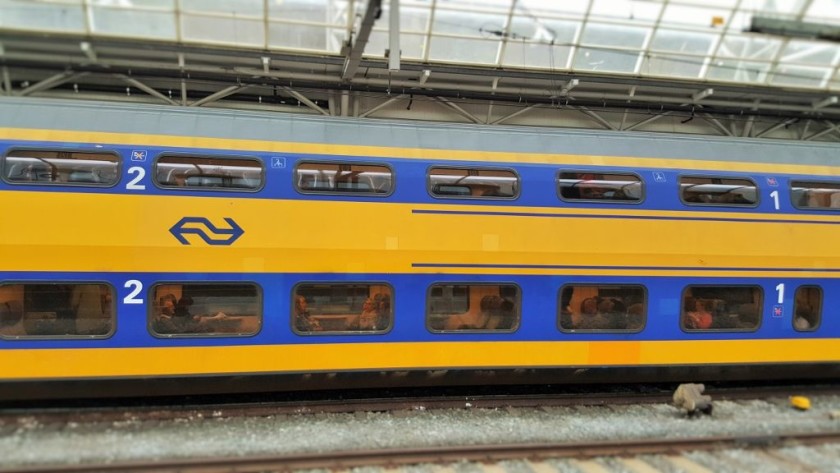
Travelling on Dutch trains:
Dutch trains operated by NS are functional rather than fabulous, but with journey times rarely exceeding two hours, this isn’t a problem. It's also why reservations are not available on national train services that operate wholly in The Netherlands; which is a plus for rail pass users who can hop on and off any of these trains.
Wi-fi is available on all express InterCity (IC) trains, except for the for the InterCity Direct services which use the high speed line. It's also available on the newer trains used for the local Sprinter services. You can also access Wi-fi on the international ICE and Thalys services in The Netherlands.
Note that trains operated by NS on routes solely within The Netherlands also have no on board catering facilities.
Something else to watch out for is that on the outside of some Dutch trains, the button that opens the door can be an arm’s length from the door itself.
Train services tend to operate to a fixed timetable (departing at the same minutes of each hour) with all IC train routes operating at a minimum of 1 x train per hour
Within the most populous Randstad area (the area around Amsterdam, The Hague, Rotterdam and Utrecht) trains services operate at least every 30 mins on all routes.
Something to be aware of is that Amsterdam Centraal/Amsterdam C station isn’t the hub of the Dutch rail network. Instead many trains to and from the city use Amsterdam Zuid station, which is located to the south of the tourist heart of the city, in the business district. As a result from some locations a change of train is required when travelling to Amsterdam C station, but these and other connections are built into the timetable. Intercity trains are very rarely more than 10 mins late.
When travelling between cities, the fastest options are the InterCity (IC) trains, so it’s worth looking out for these. Particularly in North and South Holland the faster InterCity trains share routes with stopping trains, but these stopping trains are somewhat confusingly designated Sprinter .
So avoid hopping on a 'Sprinter' because it is the next train to leave. It's likely that a later InterCity service will actually get you to your destination quicker.
The Dutch national rail operator NS, uses a generic ‘InterCity’ branding for its express trains that skip stations. There are multiple types of trains that NS uses on its Intercity services and specific types of train are usually allocated to each route. Hence some routes are served by the iconic double deck trains, while others have the single deck trains
Some longer distance InterCity trains can skip stations that other InterCity services, on shorter routes, call at. While on the sections of the longer InterCity routes furthest from Amsterdam and Rotterdam, some InterCity services call at virtually all stations and in effect become the local trains.
The InterCity Direct services are exceptional - they require a supplement to be paid to travel by them, because they travel on the 'high-speed' Schiphol - Rotterdam - Breda line.
Despite these trains not actually travelling at high-speed (regular trains are currently used), a supplement of up to €2.40 is now charged in both 1st and 2nd class for journeys which involve travelling between Schiphol and Rotterdam, so that includes:
- Amsterdam ↔ Rotterdam
- Amsterdam ↔ Breda
- Schiphol ↔ Breda
- Schiphol ↔ Rotterdam
When buying a ticket for a journey by these trains, the best option is to buy an ordinary ticket for the journey. You then have to pay for the supplement on the red 'supplement' pole which you will find on the platforms/tracks (spors) which these trains use. The reason for using this method is if you don't travel in business hours, the price charged by these supplement machines will be reduced by €1. If you will be travelling with a Chipkart, you need tap it against these poles (machines) prior to boarding.
NON-FOLDING bikes can only be taken on NS trains if you purchase a day ticket for bikes also known as a 'Bicycle Card Dal'. But there are exceptions, in particular on Mon-Friday you cannot take non-folding bikes on any train between 06:30 - 09:00 and between 16:00 - 18:30.
Bike spaces can now be booked in advance of travel.
Virtually all NS trains have specific bicycle storage areas, look for the symbols on the outside of the train. You must use these when taking a bike on board; more info is available HERE
Click on the buttons below to access info such as on board facilities, and what to look out for when boarding and travelling with luggage/bikes.
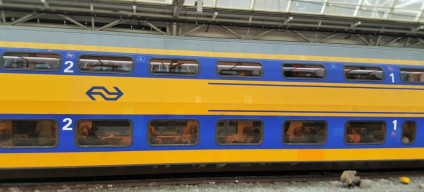
Notes on the international trains:
There are seven international DAYTIME train services from and to The Netherlands:
1: Eurostar formerly Thalys trains operate on these routes:
- Amsterdam – Schiphol – Rotterdam – Antwerpen – Bruxelles Midi – Paris gare du Nord
- Amsterdam – Schiphol – Rotterdam – Antwerpen – Bruxelles Midi – Paris Aeroport CDG - Marne la Vallée for Disneyland Paris
- Amsterdam – Schiphol – Rotterdam – Lyon – Marseille (summer only)
Seat reservations are mandatory on these trains - the reservations are automatically included on tickets booked online or at stations.
2: InterCity Brussels trains operate on these routes:
- Amsterdam – Schiphol – Rotterdam – Breda – Antwerpen – Bruxelles Airport – Bruxelles Nord – Bruxelles Central – Bruxelles Midi
- Den Haag/The Hague (HS) – Rotterdam – Breda – Antwerpen – Bruxelles Airport – Bruxelles Nord – Bruxelles Central – Bruxelles Midi
Note that these trains call at Bruxelles Nord and Bruxelles Central, but the Thalys trains skip these stations.
3: German ICE3 trains operate on these routes:
- Amsterdam – Utrecht – Arnhem – Oberhausen – Duisburg – Dusseldorf – Koln/Cologne – Frankfurt Flughhafen/Airport – Frankfurt (Main)
- Amsterdam – Utrecht – Arnhem – Oberhausen – Duisburg – Dusseldorf – Koln/Cologne – Frankfurt Flughhafen/Airport – Mannheim – Karlsruhe - Offenburg – Freiburg – Basel (1 x train per day)
4: German IC trains, which NS brands as ' Intercity Berlijn ' operate on this route: Amsterdam – Amersfoort – Deventer – Bad Bentheim – Rheine – Osnabruck – Hannover – Wolfsburg – Berlin
5: German Regional trains operate on these routes:
- Venlo – Monchengladbach – Dusseldorf – Wuppertal - Hamm
- Arnhem - Emmerich - Oberhausen - Duisburg – Dusseldorf.
6: Eurostar also offer a direct service from London St. Pancras to Rotterdam and to Amsterdam .
This service runs up to 4 x per day and the trains only call at Bruxelles-Midi/Brussels South on route to The Netherlands.
On the return leg (from Amsterdam and Rotterdam to London) a direct service is now also available.
7: Eurostar formerly Thalys also offers a winter only service from Amsterdam, Schiphol and Rotterdam to Bourg St Maurice in the French Alps.
For many years the only overnight train service from The Netherlands was the Alpen Express . which connects these Dutch cities - Amsterdam, Den Bosch, Den Haag, Eindhoven, Haarlem, Leiden, Utrecht and Venlo and multiple Austrian ski resorts - with an outward journey to Austria on Fridays between December 20th and March 13th and a return on Saturdays between December 21st and March 14th.
But now there are Nightjet services on three routes from Amsterdam via Utrecht and Arnhem
- to Munich/Munchen and Innsbruck
- Linz and Wien/Vienna
- to Basel and Zurich.
The journey guides include access to booking links and information about the trains, tickets and destination stations. Plus for the scenic routes there are insights on how to make the most of the rides on the trains.
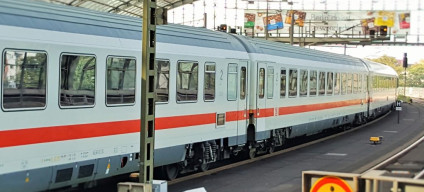
Nine things which are good to know about the larger Dutch stations:
1: The main stations in The Netherlands do not have the type of large electronic departure boards that can be typically found on the main concourse in other countries. Instead departures are listed solely on the smaller TV style screens that will be located around the station. However, at busy stations only the trains departing within the next 10-15 minutes may be shown.
2: These information screens in the departure halls only show the terminating station AND the principle stations that the train will be calling at (‘via Delft, Leiden’ etc).
3: On all departure information screens, if a train is terminating at Amsterdam Centraal (the city’s main station) ‘Amsterdam Centraal’ is displayed. However, if a train is calling at Amsterdam Centraal on route to somewhere else, then ‘Amsterdam C’ is displayed.
4: The main info screens on the platforms/tracks (sporen) which show the next train to depart DO list all the stations that a train will be calling at. It will be shown as scrolling text next to 'via'.
5: Dutch stations also don’t have paper departure sheets that list all trains consecutively. Instead each route has its own dedicated departure sheet, the station that you will be travelling to, will be listed on one of these sheets. However, the main stations therefore have multiple departure sheets, as they have multiple routes passing through them.
So if you’re not familiar with the routes, finding your station on these sheets, to discover the times of subsequent trains can be tricky, but staff at the info/reservation desk or ticket office will be able to help.
6: Most of the larger Dutch stations have long platforms/tracks (sporen) which are divided into sections (not zones) Trains tend to depart from a specific section of the spoor/track/platform - ‘8a’ or ‘8b’ etc. If you are new to Dutch train travel, make sure you don't mix them up.
7 The platforms/tracks/sporen on Dutch station platforms usually aren't zoned in terms of wait in Zone A for coaches 1 to 3 etc. That's because with reservations not possible on domestic train services, there's little point in directing travellers to wait in specific areas on a spoor/platform.
However, as a result people tend to gather around the entrance points to a spoor/platform, particularly around the departure indicators. So a tip is to move away from the crowds; as reservations aren't possible on NS trains, there can be a scramble to board particularly busy trains. But avoid straying too far, because a quirk of IC trains is that most are formed of 8 -12 carriages/coaches, but some have only 4. And when 4 coach trains are used, a dash along the platform/spoor in order to board the train is often inevitable.
At the stations used by international trains there are now zones, but this zone info is typically only used for the international trains; the Eurostar, ICE, Thalys,, IC to Germany and Nightjets, as these trains have numbered coaches. So you can use the zone info to locate a specific coach in which a reserved seat or bed is located, as this zone info is used on the departure screens for these trains.
8: Virtually all Dutch stations are gated meaning that you have to pass through a gate/barrier to access the platforms/sporen. The gates are opened by scanners that read barcodes on the ticket, you don’t insert tickets.
What isn’t obvious is that there are two types of gates. If you have purchased a ticket for a specific journey, from a machine or ticket office, or will be using a rail pass, then use the ticket gates that have clear glass scanners, through which you can see a red light.
9: Though something to be particularly aware of is that tickets aren't required to open the gates, they can be opened by using mobile phones linked to mobile bank accounts and by OV-Chipkaarts. However, when using tickets stored on phones to open the gates, the OV system can also deduct a €20 from a mobile bank account stored on a phone. If this does occur the €20 charge can be refunded on the OV website .
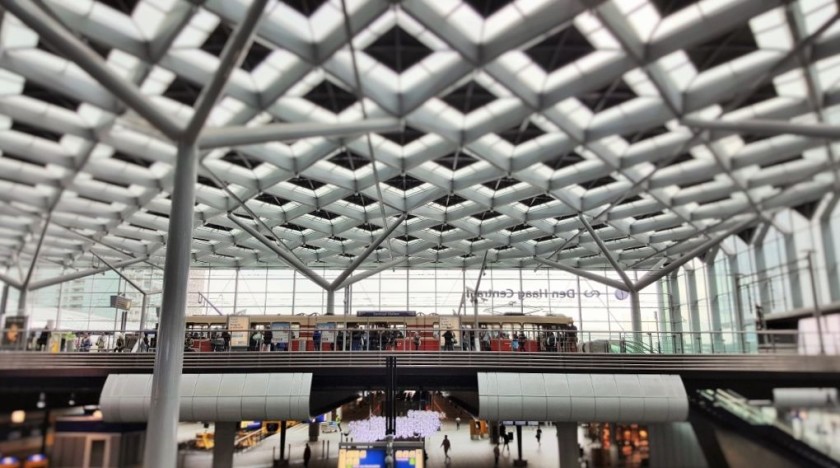
Notes on the ticketing:
Five Things That Are Good to Know about Dutch train tickets:
1: Discounted tickets are not available for journeys WITHIN The Netherlands; neither are they available on the Regio trains to Germany. Therefore there is no need to book tickets for domestic journeys solely within The Netherlands online, they will cost the same if booked at the station. Though if you use a ticket counter you will have to pay a €0.50 service charge.
2: NS ticket machines have excellent English translations, but they only accept cards and coins, not notes.
3: If you will be buying a ticket for a journey that requires a change of train, then it’s a good idea to use a ticket office. You can then enquire about how to make the connection at the station, where you will have to change.
4: The tickets issued by the machines, or a ticket office, have barcodes that will open the ticket gates that allow access to the platforms. Stations used by international trains also have manned barriers; in case you need assistance in passing through the barrier.
5: Have your passport with you, even when making journeys solely within The Netherlands. If a ticket inspection is carried out on the train you may be asked for an I.D. document.
The majority of Dutch people use travel cards instead of buying tickets. Known as 'OV-Chipkaarts' they're sold online by NS online here or at stations and can be used by visitors. They can be used on the bus, tram and metro as well as the trains!
The Holland Travel Ticket is in effect a one-day national travel pass that can be used by visitors to The Netherlands. It covers all public transport including the trains, metro / subways, trams and buses. The Off Peak version is cheaper, but it can't be used in the mornings between 06:30 and 09:00.
Staying in or near Amsterdam
You can use the Amsterdam Region Travel Ticket for unlimited travel by train (2nd class) between any of the following stations in Amsterdam and the Amsterdam region:
Almere : (Almere Buiten, Almere Muziekwijk, Almere Oostvaarders, Almere Parkwijk, Almere Poort), Amsterdam: (Amsterdam Amstel, Amsterdam Bijlmer ArenA, Amsterdam Centraal, Amsterdam Holendrecht, Amsterdam Lelylaan, Amsterdam Muiderpoort, Amsterdam RAI, Amsterdam Sciencepark, Amsterdam Sloterdijk, Amsterdam Zuid), Beverwijk, Bloemendaal, Bussum Zuid, Diemen, Diemen Zuid, Driehuis, Duivendrecht, Haarlem , Haarlem Spaarnwoude, Halfweg-Zwanenburg, Hilversum: (Hilversum, Hilversum Media Park, Hilversum Sportpark), Hoofddorp , Koog aan de Zaan, Lelystad Centrum , Naarden-Bussum, Overveen, Purmerend: (Purmerend, Purmerend Overwhere, Purmerend Weidevenne), Santpoort: (Santpoort Noord, Santpoort Zuid), Schiphol Amsterdam Airport , Uitgeest, Weesp , Zaandam, Zaandam Kogerveld, Zaandijk Zaanse Schans, Zandvoort aan Zee .
There are versions valid for 1 Day, 2 Days and 3 Days and the ticket is also valid on all trams, buses, night buses, metros and ferries run by the Amsterdam transport company GVB, EBS, Keolis and Connexxion in Amsterdam and the Amsterdam region - which is in effect the public transport network in Amsterdan.
For children aged 3 and under there is free travel, but the child must not occupy a seat to themselves.
For children aged 4 - 11 you need to purchase ' Railrunner ' tickets for children in this age group, but they cost only €2.50 per child and 'Railrunners' are valid for the whole day. So you don't need to buy separate 'Railrunner' tickets for each journey.
In contrast to tickets for journeys WITHIN The Netherlands, discounted tickets are placed on sale for international travel on ICE, Thalys and the IC trains to Belgium, France and Germany. This is why NS operates a separate booking site ' NS International ' for these journeys (amongst others).
If you will be using Eurail or InterRail passes valid for travel in The Netherlands, you can hop on any train between Dutch stations, including the InterCity Direct and ICE trains. Eurail and InterRail passes have barcodes printed on them that in theory will open the ticket gates at stations. If they don’t do so, go to a NS reservation desk and they’ll issue you with a keycard that has a barcode printed on it.
Avoid booking reservations for international trains with mandatory reservations at Dutch stations if possible - as a booking fee will be charged per reservation. NS International does not sell these RAIL PASS reservations online.

This second version of ShowMeTheJourney is exciting and new, so we are genuinely thrilled that you are here and reading this, but we also need your help. We’re striving not to let anything get in the way of providing the most useful service possible, hence a facility has been set up with DonorBox which can be used to support the running costs and make improvements.
Instead of advertising or paywalls, your financial support will make a positive difference to delivering an enhanced service, as there’s a lot of ideas which we want to make happen.
So if you have found the info provided here to be useful, please go here to say thank you .

The info will help you have an easier journey;

Help keep us advertising and paywall free!
This second version of ShowMeTheJourney is exciting and new, so we are genuinely thrilled that you are here and reading this, but we also need your help.
We’re striving not to let anything get in the way of providing the most useful service possible, hence a facility has been set up with DonorBox which can be used to support the running costs and make improvements.
So if you have found the info provided here to be useful, please consider saying thank you.

This is one of more than 100 train travel guides available on ShowMeTheJourney , which will make it easier to take the train journeys you want or need to make. As always, all images were captured on trips taken by ShowMeTheJourney.

- Europe by Train
- Journey Guides
- Rail Stations
- Trip Planning
- Travel Articles
- Tips from 100s of journeys
- How to take a night train
- Good to know about daytime trains
- Travelling with Children
- Taking Bikes on Trains
- Travelling with Luggage
- Taking dogs on trains
- Common benefits of first class travel
- Journeys with multiple connections
- Money saving advice
- The best permanent deals and offers
- Intro to seat reservations
- Step-by-step booking guides
- InterRail/Eurail
- Access over 500 rail holidays
- Save 5% on more than 30 Swiss rail holidays
- Book a range of Swiss rail passes
- Buy Half Fare Cards for Switzerland
- Book train tickets with Trainline
- Book rail holidays worldwide with Bookmundi
Rail Passes for the Netherlands – InterRail, Eurail and Domestic

A rail pass is a special ticket which allows unlimited train travel for a certain period in a specific region. There are a number of different rail passes available which cover travel to/from Amsterdam and around the Netherlands.
This article highlights the use of InterRail and Eurail passes in the Netherlands as well as some tips for other Holland rail passes. Obviously, rail travel has been impacted by the ongoing ‘coronavirus’ measures.
InterRail Pass
This pass is only available for European citizens and residents including Turkey. You can purchase an InterRail Pass here
The InterRail Global Pass is a rail pass valid for travel in 33 countries around Europe:
Austria, Belgium, Bosnia-Herzegovina, Bulgaria, Croatia, Czech Republic, Denmark, Estonia, Finland, France, Germany, Great Britain, Greece, Hungary, Ireland, Italy, Latvia, Lithuania, Luxembourg, Montenegro, Netherlands, North Macedonia, Norway, Poland, Portugal, Romania, Serbia, Slovakia, Slovenia, Spain, Sweden, Switzerland and Turkey.

You have the choice of buying continuous passes of either 15 days, 22 days, 1 month, 2 months or 3 months giving unlimited travel during the duration of the pass; or flexi-passes which offers 4, 5, 7 travel days during a 1 month period or 10 or 15 days within a 2 month period.
Current adult prices (2024) for a 1 month Global Pass are €696 (2nd class) and €884 (1st class) .
Youths aged 12-27 pay €522 (2nd class) and €663 (1st class) whilst seniors over 60 pay €626 (2nd class) or €796 (1st class).
A child pass is available for children 4-11 – up to 2 child passes are allowed for free per accompanying adult pass holder. Children 0-3 travel free without a ticket.
The InterRail pass allows free travel on most regional and local trains that do not require reservations.
Note, in the pass holder’s country of residence it is only valid for travel on the first day (outbound journey) and last day (inbound journey).
An InterRail ticket comes in one of 2 formats – a standard paper ticket where you fill out each journey by hand; or a digital Mobile Pass on a smartphone via the Rail Planner app – this requires an internet connection at least once every 3 days for verification.
InterRail Pass use in the Netherlands
The InterRail pass is valid for all standard NS train services in the Netherlands including Intercity and sprinter trains – see Dutch Train Types for more info. It is also valid for travel on other Dutch train providers including Arriva, Blauwnet, Breng, Connexxion (Valleilijn), Keolis and R-net.

InterRail first class pass holders get access to the NS International lounges at Amsterdam Central, Rotterdam and Schiphol Airport.
Interrail ticket holders need to pay a €2.90 supplement for travel on the the domestic Intercity Direct trains running between Schiphol Airport and Rotterdam. no supplement is required between Amsterdam-Schiphol Airport and Rotterdam-Breda.
It is also possible to travel freely on the Amsterdam-Berlin Intercity and ICE international trains (Amsterdam-Dusseldorf-Cologne-Frankfurt). You can pay an optional €4.50 (2nd class) or €5.90 (1st class) to reserve a seat on the ICE International – note, reservations are compulsory in the summer months.
Note that there are compulsory reservation fees for the high-speed Eurostar (formerly Thalys) train (Amsterdam-Brussels-Paris). Amsterdam-Brussels costs €22 (standard) and €27 (comfort), Amsterdam-Paris costs €32 (standard) and €37 (comfort).

To travel Amsterdam-Paris without the Eurostar take a standard Intercity train from Amsterdam to Antwerp, then take a Belgian Intercity to Lille Flandres – there can be a change of train required in Kortrijk.
From Lille Flandres take a Regional TER to Amiens and then finally take an InterCités (reservation from €10) to Paris Nord. This trip takes around 7 hours 40 minutes compared to the 3 hour 20 minute Eurostar.
If you want to cross the Dutch border to Belgium or Germany by standard regional trains then see our article International rail borders in the Netherlands
Travel on the Eurostar (London-Amsterdam) is now included with an InterRail pass. There is a compulsory reservation fee of €35 (Standard) or €43 (Standard Premier).
Interrail and Eurail passholders get 30% off the Stena Line ferry between Harwich and Hoek van Holland – both ports are accessible by rail/metro.
There are also reservation fees for NightJet trains from Amsterdam to Basel, Zurich and Vienna. These prices are dynamic and depend on demand – it starts from €5 for a seat up to €470 for a deluxe single sleeper.
InterRail Benelux Pass
Another option is the Benelux Pass for unlimited travel on NMBS/SNCB in Belgium, NS and other Dutch domestic trains plus trains in Luxembourg. The passes are valid 1 month and allow travel for 3, 4, 5, 6 or 8 days.
Prices for adults (aged 28-59) range from €119 (2nd class) or €139 (1st class) for a 3 day pass up to €224 (2nd class) or €263 (1st class) for an 8 day pass.
Obviously you should work out beforehand exactly where you plan to travel and whether normal point-to-point tickets would work out cheaper. Also note, 2nd class rail travel in Luxembourg is free.
You can purchase an InterRail Pass here
Eurail Pass
This European rail pass is available for non-European residents and popular with North Americans, Australians etc.
Like the Interrail pass, the Eurail Global Pass is valid in the following 33 countries:
Eurail Global passes come as flexi passes : 4, 5 or 7 travel days within 1 month; 10 or 15 travel days in a 2 month period; or continuous passes of 15 days, 22 days, 1,2 or 3 months.
Current adult prices (2024) for a 1 month Global Pass are USD $766 (2nd class) and USD $972 (1st class) .
Youths aged 12-27 pay $574 (2nd class) and $729 (1st class) whilst seniors over 60 pay $689 (2nd class) or $876 (1st class).
Eurail also has One Country Passes – the Netherlands comes under “Benelux” which includes Belgium and Luxembourg. These come as 3, 4, 5, 6 or 8 day passes within 1 month and prices range from $151 to $285 for adults.
Similar to the InterRail ticket, supplements are required on premium rail services such as the Eurostar and night-time trains.
Continuous InterRail and Eurail passes are a great way to get a flavour of many European cities. The trick is to compromise between travel and stopping over. Travel during night-time can save on accommodation costs but can be tiring and you won’t see much scenery at night.
Remember that southern countries have relatively cheap rail tickets so to get better value from the pass you should also tackle some of the more expensive rail nations in the north of Europe.

Domestic Rail Passes in the Netherlands
NS Day Travel Card ( NS Dagkaart ) – This allows 1 day’s unlimited travel on any NS train in the Netherlands. It costs €58.80 (2nd class) or €99.96 (1st class) in 2024. It can be purchased online in advance or added to an OV-chip card.
This ticket is only good value if you really have to do a significant amount of rail travel requiring multiple stops in a single day.
Holland Travel Ticket – This is a 1 day ticket (disposable OV-chip card) which gives unlimited public transport in the Netherlands. It costs €70 for the standard ticket or €48 for the off-peak version (peak hours are 0630-0900, Mon-Fri).
Rail Runner – Children 4-11 accompanied by an adult with any NS ticket pay €2.50 for a “Rail Runner” ticket which is valid all day. Children under 4 travel free.
How To Book International Tickets
You can check timetables, prices and make bookings for all international train services including Eurostar, TGV, ICE, NightJet at the NS International site or at the Trainline site .
For more info see International Train Services to/from Amsterdam
This article was originally published in 2011 and has continuously been updated. Last update 19 March 2024 .
Links on AmsterdamTips.com may pay us an affiliate commission.
Related Articles

Netherlands Railways Guide – Dutch Train Travel Tips

Train Stations in Amsterdam

Is There a Left Luggage Facility at Amsterdam Central Station?

How To Buy Dutch Train Tickets
Nomadic Matt's Travel Site
Travel Better, Cheaper, Longer
The Netherlands Travel Guide
Last Updated: April 18, 2024
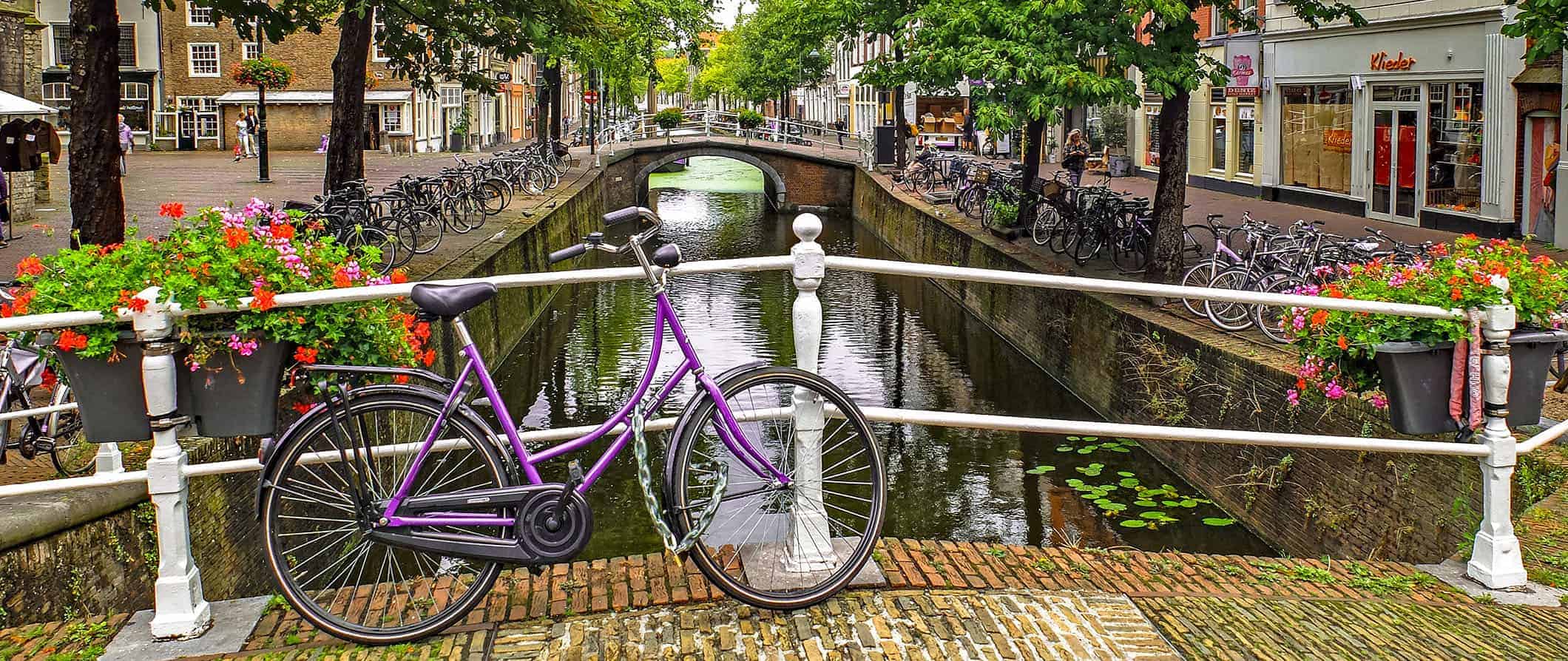
When most people think of traveling in the Netherlands, they think of Amsterdam , with its semi-sleazy Red Light District, charming canals, historic windmills, and laid-back “coffee” shops where you can smoke pot.
But there is much more to the country than its largest city.
The Netherlands is a country filled with centuries-old brick homes, an interconnected system of canals (you can travel most of the country via the water), expansive farmland, and even some really nice beaches. It’s one of my favorite countries in the world. The people are wonderful, there are tons of small towns to explore, and its small size means it’s easy to visit in a short time.
Most travelers come here just to see Amsterdam for a few days before moving on.
Don’t do that.
Spend time exploring outside of Amsterdam and you can discover the country that keeps me coming back every year.
Whether you are backpacking or just traveling on a budget, this Netherlands travel guide can help you plan your trip, save money, and ensure you make the most out of your time here.

Table of Contents
- Things to See and Do
- Typical Costs
- Suggested Budget
- Money-Saving Tips
- Where to Stay
- How to Get Around
- How to Stay Safe
- Best Places to Book Your Trip
- Related Blogs on the Netherlands
Click Here for City Guides
Top 5 things to see and do in the netherlands.
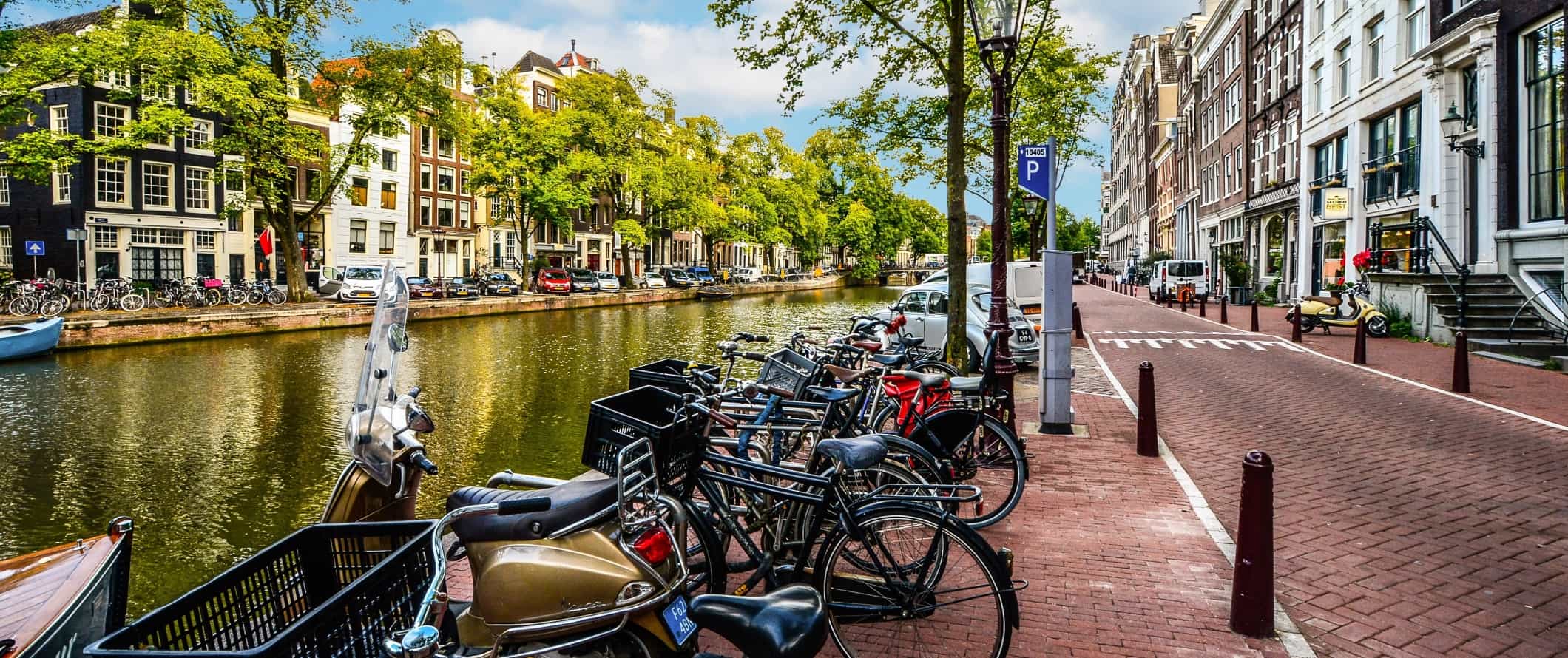
1. Visit Amsterdam
The capital and center of tourism in the country, Amsterdam is as beautiful as it is crazy. There are famous canals, beautiful and historic houses, tons of parks, a foodie scene, art, coffee shops, and, of course, the infamous Red Light District and its wild nightlife. It’s perfect for exploring by bike and it’s every museum lover’s dream, with exhibitions on everything from Anne Frank to van Gough. Take a free walking tour to really get a feel for the city.
2. Explore Rotterdam
Rotterdam is one of the busiest shipping ports in the world. It may not get the attention Amsterdam does, but this city is a great place to visit if you want good parks and modern architecture (most of the old buildings were bombed in World War II) — including some futuristic cube houses. The port has an interesting harbor to explore (you can learn more about it in the attached Futureworld) and a few decent museums. It’s an often-overlooked city that’s worth a few days of exploring.
3. Take a canal tour
Whether in Amsterdam or in another city, make sure you take a canal tour to see the canals that made the country famous. The canals are such an integral part of life that you can’t really understand the country until you spend time boating on the canals. You can take a tour with a large company (there are tons of different canal tours on offer including a pizza cruise, cruises with wine and cheese, and booze cruises with unlimited drinks) but if you can, I suggest you rent your own boat which is much more affordable (prices start at 50 EUR) and gives you a more intimate experience.
4. Tour Leiden
Head to this small town and see where the Pilgrims lived before they left for America. It’s a historic city and filled with beautiful 17th-century buildings and landscaped parks. There are over a dozen museums in this small city, including the Museum of Antiquities and the National Museum of Ethnology. It also boasts in one of the Netherlands’ largest flower-growing areas. Go in May to catch the best of the tulip season.
5. Wander The Hague
Other things to see and do in the netherlands, 1. day trip to historic haarlem.
Haarlem, located just outside Amsterdam, was a cultural and economic hub during the Dutch Golden Age (1588-1672). Wander the city and take in the historic homes of the merchant class who brought the city to prominence. There’s not a ton to do here but the town center has a good market, a towering Gothic church, and it’s a low-key alternative to the hustle and bustle of Amsterdam. It makes a nice escape for an afternoon.
2. Celebrate King’s Day (Koningsdag)
Every year on April 27th (April 26th if the 27th is a Sunday), the Dutch celebrate the birthday of their King, Willem-Alexander for Koningsdag . For 33 years, they celebrated Queen Beatrix on April 30th as part of Queen’s Day, however, in 2013 she passed the throne to her son so the holiday changed dates, and Queen’s Day became King’s Day. It’s a national holiday filled with outdoor concerts, lots of orange (the national color), plenty of drinking, and insane celebrations on the canals. It is one of the wildest national holidays I’ve ever celebrated.
3. Visit Edam
Edam is a popular cheese from the Netherlands. It’s also a town just 21 kilometers (13 miles) north of Amsterdam. Edam is a picture-perfect Dutch town with iconic windmills, rolling farmland, and quaint houses. It’s one of the most quintessential Dutch towns. You can explore the 18th-century cheese warehouses, go on a boat tour, or just come here to eat cheese and be as Dutch as possible!
4. Head to the Keukenhof
The Keukenhof is the largest flower garden in the world, boasting 79 acres of spectacular floral displays. Located between Amsterdam and The Hague, the garden is open between March and May of each year when the tulips are in season. More than 7 million bulbs are planted annually and the garden has around 800 different types of tulips. When you picture Holland, you picture flowers and there is no better place to see them than here! Admission is 19 EUR.
5. Bike through Hoge Veluwe National Park
Hoge Veluwe National Park is the largest national reserve in the Netherlands. Covering some 55 square kilometers (21 square miles), the park is composed of sand dunes and woodlands and is home to deer, wild sheep, foxes, badgers, boars, and more. You can rent bicycles to explore for 5 EUR. Don’t miss the Kröller-Müller Museum while you’re here. It has works by artists like van Gogh, Picasso, Rodin, and other masters. Admission to the park is 12.30 EUR.
6. Relax in Maastricht
One of the southernmost towns in the Netherlands, this city is famous for having the country’s only “mountain.” At 322 meters high (1,056 feet), Vaalserberg is really more of a hill and doesn’t take long to climb. But this often-overlooked city is a great place to experience Dutch life away from the hordes of tourists who frequent Amsterdam.
7. Go cycling
As one of the most popular activities throughout the country, you would almost feel out of place not on a bike. The Netherlands is covered by over 20,000 kilometers (12,400 miles) of paths dedicated to two-wheeled transportation. Hoge Veluwe National Park is a particularly beautiful place to ride, but the entire landscape of the country is quite scenic as well. Other popular places to cycle are the Dunes of Texel National Park, Kinderdijk (to see the windmills), and Lauwersmeer National Park. Bike rentals cost around 10-12 EUR per day.
8. Tour Delft
This is a fascinating little town, making it the perfect destination for a day trip. The town is known for its blue pottery (Delftware), but has a handful of other worthwhile sights to see too, including a Gothic church in the old town with a leaning tower (the foundation developed problems during construction); the Oostpoort, a city gate from 1400 that remains from the original city wall; and the stout City Hall building, part of which dates to the 17th century. The town lies just 20 minutes from The Hague and Rotterdam so you can visit as a day trip from either.
9. Admire van Gogh’s work
Open since 1973, this museum in Amsterdam is host to over 500 original works by Vincent van Gogh, in addition to works by some of his contemporaries and friends. The exhibits chronicle his life, showing the progress and development of his work, alongside Gaugain, Monet, and Toulouse-Lautrec. Van Gogh didn’t earn fame in his lifetime and was actually constantly struggling with poverty, making his accomplishments all the more impressive and inspiring. Admission is 20 EUR. Note: Pre-book tickets online to avoid massive queues when you arrive.
10. Visit “Venice of the North”
Slow-paced Giethoorn, located east of Amsterdam, is a charming place with lots of picturesque canals. With no cars allowed in the city center, this peaceful town is a good change of pace from the busyness of the Netherlands’ larger cities. Rent a small boat and spend the day floating by charming cottages and enjoying the slower pace of life.
11. Learn about the Netherlands’ past
Opened in 1912, the Netherlands Open Air Museum is a sprawling 100-acre space that highlights what life was like in historic Netherlands. You can see traditional cabins and houses, learn about trades and crafts, and discover more about the country’s history from the Middle Ages to the present. The museum is located in Arnhem and is a great place to visit with kids. Admission is 19.50 EUR.
12. Have fun at an amusement park
Efteling, in Kaatsheuvel, is one of the oldest theme parks in the world (it opened in 1952) and is the Netherlands’ biggest amusement park. It has all the usual theme park attractions like rollercoasters, games, and performances and is open year-round (each season has different features like fairy lights and bonfires in the winter, and tulips and Dutch terraces in the spring). Admission costs 38 EUR (prices vary by day and season). You need a reservation as well as a ticket.
For more information on cities in the country, check out these guides:
- Amsterdam Travel Guide
- The Hague Travel Guide
- Rotterdam Travel Guide
- Utrecht Travel Guide
The Netherlands Travel Costs
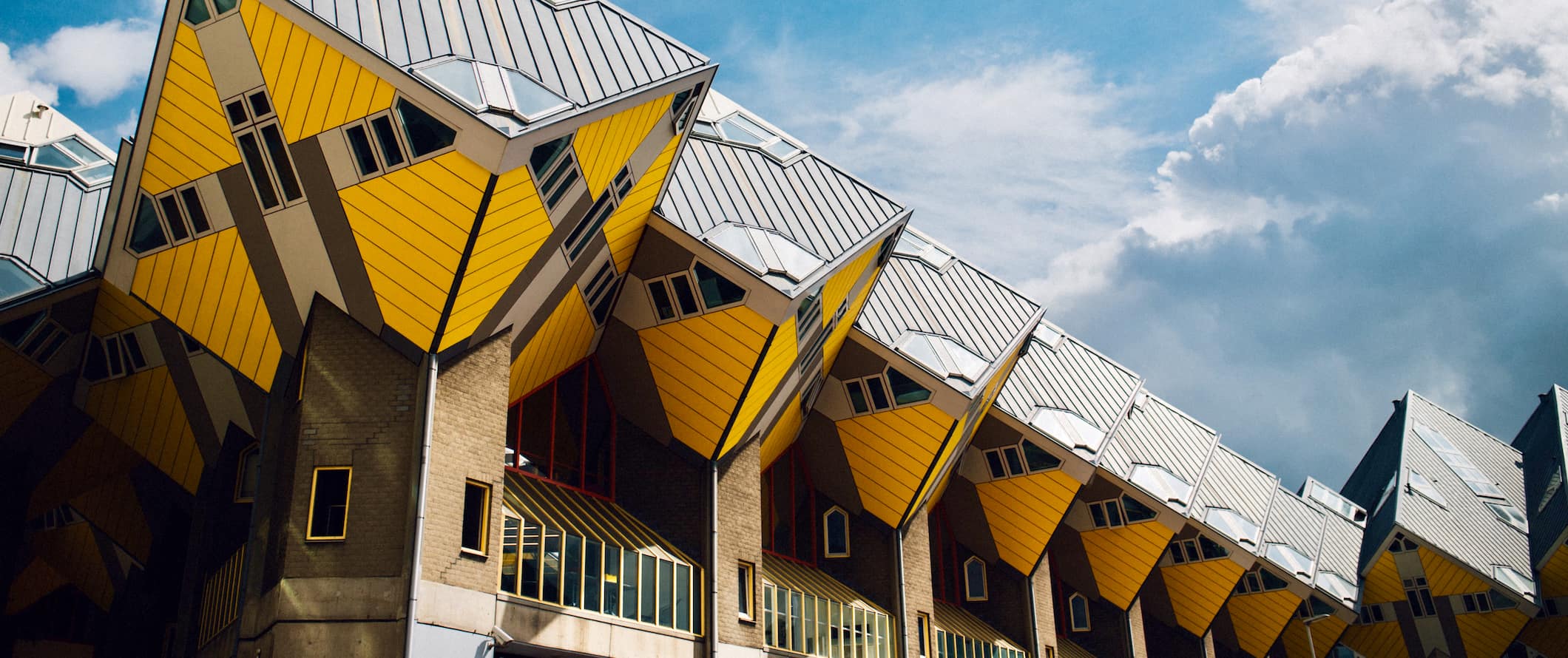
Accommodation – Hostels typically cost between 15-35 EUR per night for a bed in a dorm with 6-8 beds. The most popular hostels in Amsterdam can be closer to 50 EUR in the summer so avoid visiting in peak season if you’re on a budget (and book early if you do). Private rooms in hostels cost at least 65 EUR per night for a room that sleeps two (closer to 115 EUR in Amsterdam). Free Wi-Fi is standard, and many hostels also have self-catering facilities. In some cities, the hostels close in winter.
Camping is available around the country, with campgrounds costing around 10-15 EUR per night for a basic plot without electricity.
Budget hotels with basic amenities such as free Wi-Fi, TV, and AC cost around 55-85 EUR per night. Expect to pay 10-20 EUR more in Amsterdam and The Hague.
Airbnb is also an option, with private rooms averaging around 50 EUR per night (it’s more like 80 EUR in Amsterdam) and entire homes (including studio apartments) averaging around 100 EUR per night (but again, much higher in Amsterdam). Book early or prices can double.
Food – The Netherlands isn’t famous for its food, but there’s still good stuff to be had. Dutch cuisine typically involves lots of vegetables, bread, and cheeses (gouda originated here). Meat, while historically not as prominent, is a staple of dinner meals. Breakfast and lunch usually involve open-faced sandwiches, often with cheeses and cold cuts. Dinners are very much a “meat and potatoes” meal, with meat stews and smoked sausage being two popular choices. For those with a sweet tooth, the stroopwafel (a waffle cookie with a syrup filling) is the go-to choice, though apple tarts/pies are also local favorites.
Other things to try include poffertjes (fluffy mini-pancakes served with powdered sugar), gouda and edam cheeses, and patat (thick-cut fries with toppings).
Cheap meals at fast food joints or places like Maoz or Walk to Wok cost around 10-15 EUR. Casual restaurant meals average around 15-20 EUR for a main dish while a three-course meal at a mid-range restaurant costs around 30-35 EUR.
Chinese food costs between 10-15 EUR while a large pizza costs around the same. Beer costs 5 EUR while a latte/cappuccino is 3 EUR. Bottled water is around 2 EUR.
If you cook your meals, expect to pay around 40-65 EUR per week for groceries. This gets you basic staples like pasta, seasonal vegetables, rice, and some meat.
Backpacking the Netherlands Suggested Budgets
If you’re backpacking the Netherlands, expect to spend around 65 EUR per day. This is a suggested budget assuming you’re staying in a hostel, cooking most of your meals, using local transportation to get around, and doing mostly free activities like walking tours and lounging in the parks.
On a mid-range budget of about 160 EUR, you can stay in a private hostel room or Airbnb, enjoy some fast food and other cheap eats, have a few drinks, take the occasional taxi to get around or rent a bike, and do more paid activities like guided tours and museum visits.
On a “luxury” budget of 280 EUR or more per day, you can stay in a hotel, eat out anywhere you want, drink more, rent a car to explore, and do as many paid tours and activities as you want. This is just the ground floor for luxury though. The sky is the limit!
You can use the chart below to get some idea of how much you need to budget daily, depending on your travel style. Keep in mind these are daily averages – some days you spend more, some days you spend less (you might spend less every day). We just want to give you a general idea of how to make your budget. Prices are in EUR.
The Netherlands Travel Guide: Money-Saving Tips
While not the most expensive country in Europe, the Netherlands isn’t super cheap either. Here are some ways to help save money in the Netherlands so you don’t blow your budget:
- Limit your partying – Many people go to Amsterdam to party — and to smoke pot. While the city is cracking down on this, it’s still an unnecessary expense that can add up quickly. Limit your smoking (and limit your expenses in the coffee shops; you don’t need to buy something in every shop).
- Get the Museumkaart (Museum Card) – Good for one month for non-residents, this card gets you into several museums for only 64.90 EUR. You get access to 400 museums throughout the Netherlands and it’s good for repeat visits as well! If you’re visiting multiple cities in the country, this is a must! Compare the price to the museums you want to visit to see if it’s worth it for you.
- Bike everywhere – Biking is the cheapest form of transportation. You can rent a bike for only a few euros a day. While most Dutch cities are easily walkable, cycling is what the locals do. It’s the most bike-friendly country in the world so don’t pass up the chance to explore on two wheels. Prices average around 10-15 EUR per day but can be as low as 5 EUR.
- Attend a free festival – During the summer, everyone goes outside. Check local tourism boards for a list of free concerts, festivals, shows, and markets. Once the weather gets warm, the social calendar fills up!
- Stay with a local – Couchsurfing is a service that lets travelers stay with locals for free. It’s a fun cultural exchange platform that not only saves you money but connects you with a local who can share their insider tips. Since a lot of travelers use this service, make your requests for hosts early (especially in Amsterdam).
- Cook your own food – Dutch food isn’t going to win any culinary awards (sorry, my Dutch friends) so skip the restaurants and cook your own food. It saves you a ton!
- Bring a water bottle – The tap water here is safe to drink so bring a reusable water bottle to save money and reduce your plastic use. LifeStraw is my go-to brand as their bottles have built-in filters to ensure your water is always clean and safe.
Where to Stay in the Netherlands
Here are some of my favorite places to stay in the Netherlands:
- St. Christopher’s (Amsterdam)
- Hostel Room (Rotterdam)
- Stayokay Rotterdam Cube Hostel (Rotterdam)
- Pink Flamingo Hostel (The Hague)
- Kingkool (The Hague)
- Stayokay Utrecht Centrum (Utrecht)
- Hostel Strowis (Utrecht)
How to Get Around the Netherlands
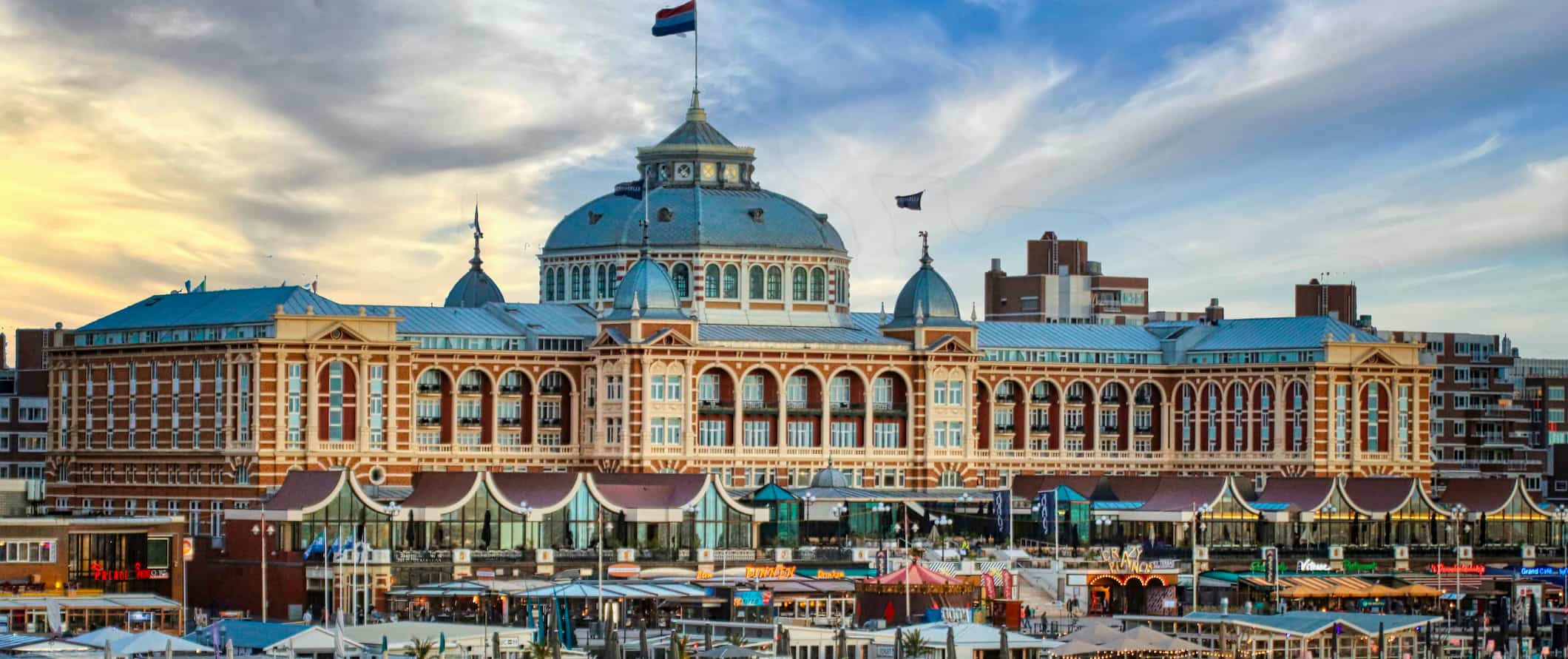
Public transportation – It’s easy to use public transportation to get around the Netherlands’ cities. One-way fares in major cities start at 4 EUR. All public transportation uses an OV-chipkaart, which you can load with money. You can also get a day travel pass (starting cost is 7-9.50 EUR).
Bus – Buses are an affordable way to get around the Netherlands, but they aren’t as fast or efficient as the train. Flixbus is the cheapest bus operator. A trip from Amsterdam to Rotterdam costs as little as 3 EUR and takes just over 1 hour, while Amsterdam to The Hague can be done for the same cost and takes 40-50 minutes.
Train – The Netherlands is so small that all major tourist destinations in the country are within a 2.5-hour train journey from Amsterdam. The national rail system is Nederlandse Spoorwegen and their service is clean and efficient. Train travel in the Netherlands is a thing of beauty!
You can use the official rail site to look up itineraries and ticket prices. Intercity train tickets around Holland are cheap and cost between 10-20 EUR, though for super short distances, they can be as little as 5 EUR. Amsterdam to Rotterdam is 11 EUR and takes 40 minutes while Amsterdam to The Hague is also 11 EUR and takes 50 minutes.
The national rail service also has special tour programs for travelers. This gives you unlimited travel throughout a period of consecutive days (such as 3-8 days of unlimited travel in a 30-day period). There’s also the Benelux Pass, which gives you access to public transportation like trams and buses for a certain number of days. Prices begin around 109 EUR and go up to 206 EUR depending on how many days you want (maximum is 8 days in a month).
To find routes and prices for trains around Europe, use Trainline .
Ridesharing – BlaBlaCar is a ridesharing website that lets you share rides with vetted local drivers by paying a small fee. You simply request a seat, they approve, and off you go! It’s a cheaper and more interesting way to travel than by bus or train and is perfect for medium and long-distance trips.
Bike rental – The Netherlands is one of the best cycling countries in the world and bike rentals here are cheap. You can rent bikes starting for around 10-15 EUR per day (sometimes as little as 5 EUR).
Car Rental – Car rentals can be as low as 25 EUR per day, but the bus and train systems in the Netherlands are so excellent and affordable that you really don’t even need to bother. For the best car rental prices, use Discover Cars .
When to Go to the Netherlands
The Netherlands receives the most tourist traffic from mid-April to mid-October, but the real peak season is July and August. However, the weather is never very extreme, and visiting during the off-season or shoulder season is also worth your time. Prices are also a lot more affordable during the off-season, and if you come between mid-April and mid-May you can see the incredible tulip fields in bloom. Just bring a rain jacket.
The average daily summer temperature is around 19°C (67°F), but it can get a lot hotter than that during July and August. The average daily temperature in the winter is 2°C (35°F). Still, coming here during the Christmas season is always a good time as the cities light up with markets and festivities.
Since the Netherlands is located below sea level, you can expect to encounter a few days of fog or rain no matter when you visit. The winters can be damp as well. Be sure to pack a warm layer or two and a waterproof jacket if you’re visiting in the shoulder season or the winter.
How to Stay Safe in the Netherlands
The Netherlands is an incredibly safe place to backpack and travel – even if you’re traveling solo, and even as a solo female traveler. Violent attacks are rare, as is petty theft.
There are a few common scams around, however, such as people trying to sell you used public transit tickets or stolen bikes. Avoid interacting with them and you’ll be fine.
If you’re worried about other travel scams, you can read about the most common travel scams to avoid right here.
Solo female travelers should generally feel safe here, however, the standard precautions apply (never leave your drink unattended at the bar, never walk home alone intoxicated, etc.).
If you experience an emergency, dial 112 for assistance.
Always trust your gut instinct. If a taxi driver seems shady, stop the cab and get out. If your hotel is seedier than you thought, get out of there. Make copies of your personal documents, including your passport and ID. Forward your itinerary along to loved ones so they know where you are.
The most important piece of advice I can offer is to purchase good travel insurance. Travel insurance protects you against illness, injury, theft, and cancellations. It’s comprehensive protection in case anything goes wrong. I never go on a trip without it as I’ve had to use it many times in the past. You can use the widget below to find the policy right for you:
The Netherlands Travel Guide: The Best Booking Resources
These are my favorite companies to use when I travel. They consistently have the best deals, offer world-class customer service and great value, and overall, are better than their competitors. They are the companies I use the most and are always the starting point in my search for travel deals.
- Skyscanner – Skyscanner is my favorite flight search engine. They search small websites and budget airlines that larger search sites tend to miss. They are hands down the number one place to start.
- Hostelworld – This is the best hostel accommodation site out there with the largest inventory, best search interface, and widest availability.
- Booking.com – The best all around booking site that constantly provides the cheapest and lowest rates. They have the widest selection of budget accommodation. In all my tests, they’ve always had the cheapest rates out of all the booking websites.
- HostelPass – This new card gives you up to 20% off hostels throughout Europe. It’s a great way to save money. They’re constantly adding new hostels too. I’ve always wanted something like this and glad it finallt exists.
- Get Your Guide – Get Your Guide is a huge online marketplace for tours and excursions. They have tons of tour options available in cities all around the world, including everything from cooking classes, walking tours, street art lessons, and more!
- The Man in Seat 61 – This website is the ultimate guide to train travel anywhere in the world. They have the most comprehensive information on routes, times, prices, and train conditions. If you are planning a long train journey or some epic train trip, consult this site.
- Rome2Rio – This website allows you to see how to get from point A to point B the best and cheapest way possible. It will give you all the bus, train, plane, or boat routes that can get you there as well as how much they cost.
- FlixBus – Flixbus has routes between 20 European countries with prices starting as low 5 EUR! Their buses include WiFi, electrical outlets, a free checked bag.
- SafetyWing – Safety Wing offers convenient and affordable plans tailored to digital nomads and long-term travelers. They have cheap monthly plans, great customer service, and an easy-to-use claims process that makes it perfect for those on the road.
- LifeStraw – My go-to company for reusable water bottles with built-in filters so you can ensure your drinking water is always clean and safe.
- Unbound Merino – They make lightweight, durable, easy-to-clean travel clothing.
- Top Travel Credit Cards – Points are the best way to cut down travel expenses. Here’s my favorite point earning credit cards so you can get free travel!
- BlaBlaCar – BlaBlaCar is a ridesharing website that lets you share rides with vetted local drivers by pitching in for gas. You simply request a seat, they approve, and off you go! It’s a cheaper and more interesting way to travel than by bus or train!
The Netherlands Travel Guide: Related Articles
Want more info? Check out all the articles I’ve written on backpacking/traveling the Netherlands and continue planning your trip:
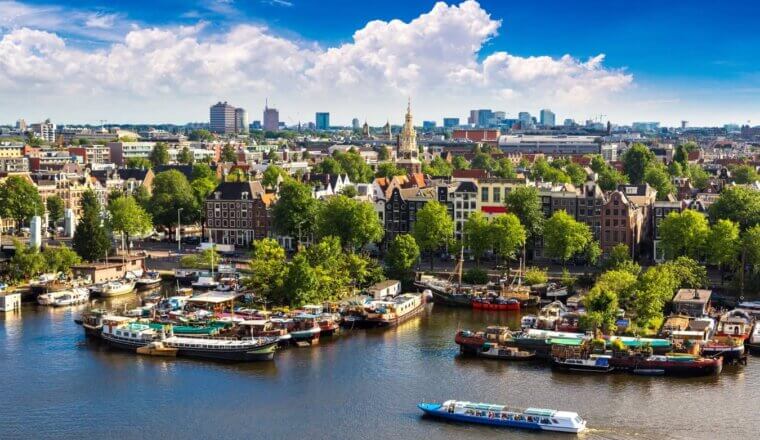
The 8 Best Hotels in Amsterdam
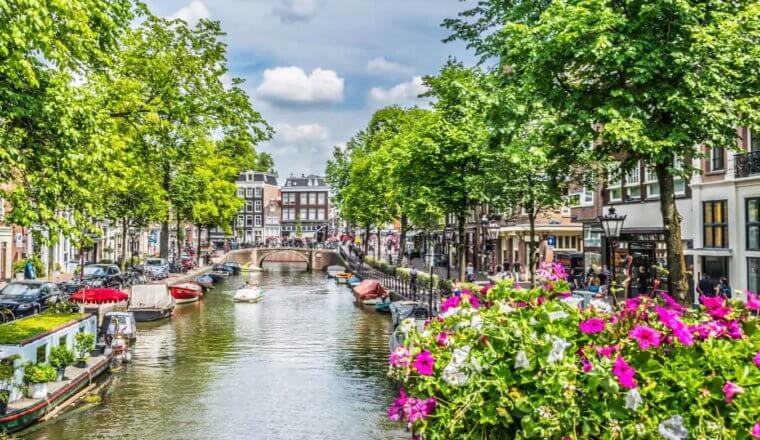
The Best Walking Tours in Amsterdam
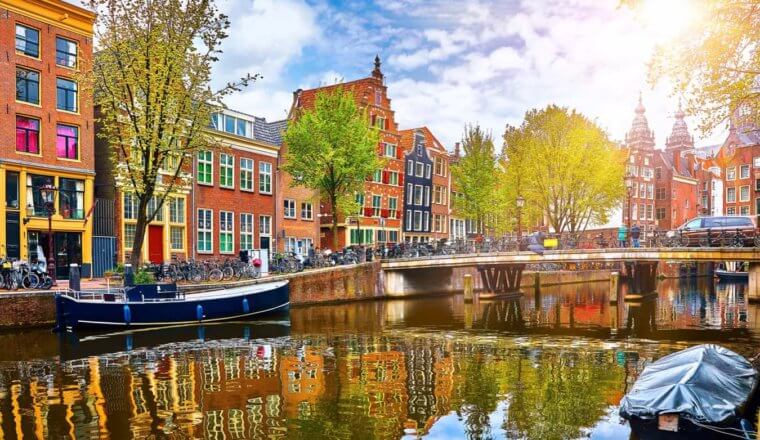
Where to Stay in Amsterdam: The Best Neighborhoods for Your Visit
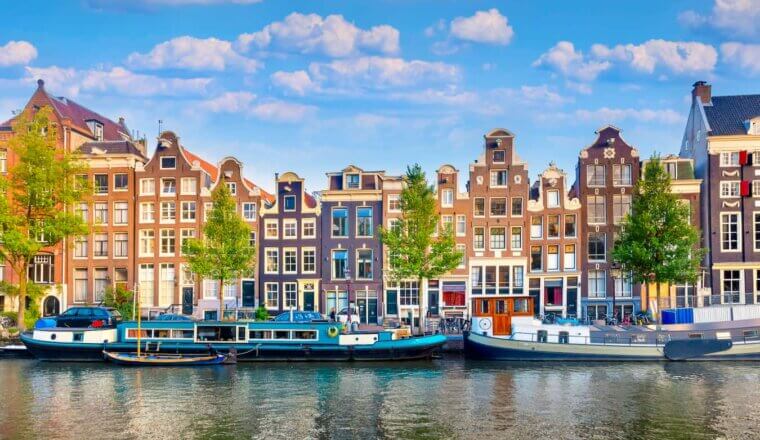
The 34 Best Things to See and Do in Amsterdam
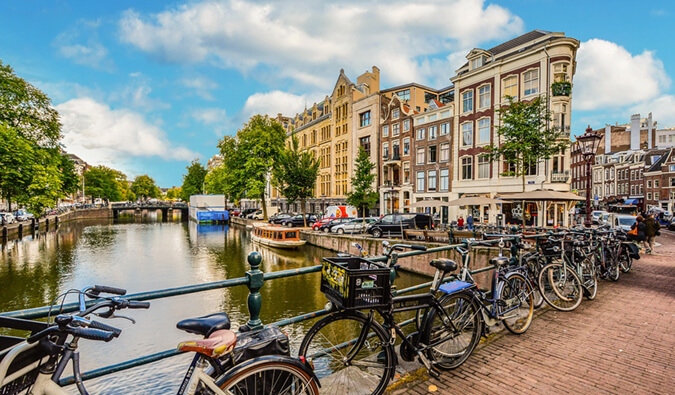
The 9 Best Hostels in Amsterdam
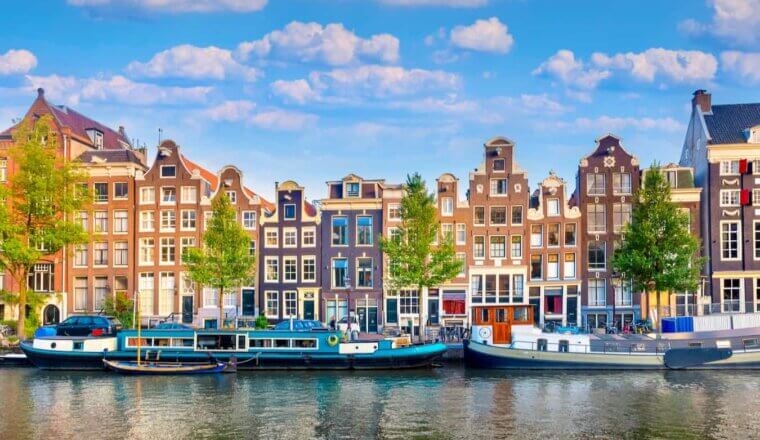
My Suggested 3-5 Day Itinerary for Visiting Amsterdam
Get my best stuff sent straight to you, pin it on pinterest.
- Where To Stay
- Transportation
- Booking Resources
- Related Blogs
- International
- Politics & Society
- Photo Report
- Relationships
- Learn Dutch
- Attractions
- Restaurants
- Scheveningen
- International Travel
- Bank for Internationals
- Dutch Language School
- International School
- Recruitment Agency
- Relocation Service
- Real Estate Agencies
- Tax Accountant
- Mortgage Advisor
- Psychologist
- DutchReview Team
- Privacy Policy
- Take Down and Notice
- Advertise with DutchReview
- Submit an article
- Editorial Internships
🚀 New feature alert! Find the best businesses for internationals on DutchReview's Business Directory
How to get a cheap Dutch train ticket: 7 handy tips
Choo choo — all aboard for some fabulous deals! 🚆
We can hear you asking this question from all the way over there: do cheap Dutch train tickets exist? Well , yes! There are plenty of options, you just need to know where to look.
The NS might have a bad reputation for hiking train prices, but there are surefire ways to find great train ticket deals. And the cherry on top? You’ll often know the price of our journey well in advance.
If you’re keen as a been to start saving some serious cash on your rail journeys, this cheap Dutch train ticket guide will have you snatching up those handy deals right away! 🤑
1. Opt for day tickets ( dagkaarten )
Something that I have always done is buy NS day tickets from supermarkets and other high street shops. A few times a year, shops such as Kruidvat, Xenos, Blokker, Hema, and Albert Heijn sell discounted train tickets.
The best thing to do is to check their websites every once in a while, or in the shop window if you happen to be walking past. Found one you like? Hoera , it’s time to buy these tickets in bulk!
However, do remember to read the terms and conditions, as I’ve found that discounted day tickets are often restricted to off-peak hours or on the weekends.
Do you need a bit of extra help sourcing some great deals? This useful website offers an overview of all running discounted train tickets offered by different shops and stores! 🙌
Unfortunately, the information is only offered in Dutch, but if you scroll down you can see the discounted prices per person on the right-hand side.
2. Check out an advantage card (AKA Dal Voordeel)
This is available to people who have an OV chipkaart , which you can get online or at any NS info counter for €7.50.
Tip: Owning an OV chipkaart is cheaper if you use public transport regularly in the Netherlands because you don’t need to pay a euro every time for the print-out tickets.
To get this ‘advantage card’ deal, you can pay €67.20 per year or €5.60 per month for a subscription . In return, you get a generous 40% off train prices to any destination in the Netherlands.
Of course, it’s important to read the fine print, as this deal is only valid at off-peak times, so you cannot travel with the discount between 6:30 AM to 9:00 AM, and 4:00 PM to 6:30 PM.
If you want a peak-times discount card (20% off during rush hour), you’ll have to pay a little more per month: €26.70. However, it’s still much cheaper than without a discount!
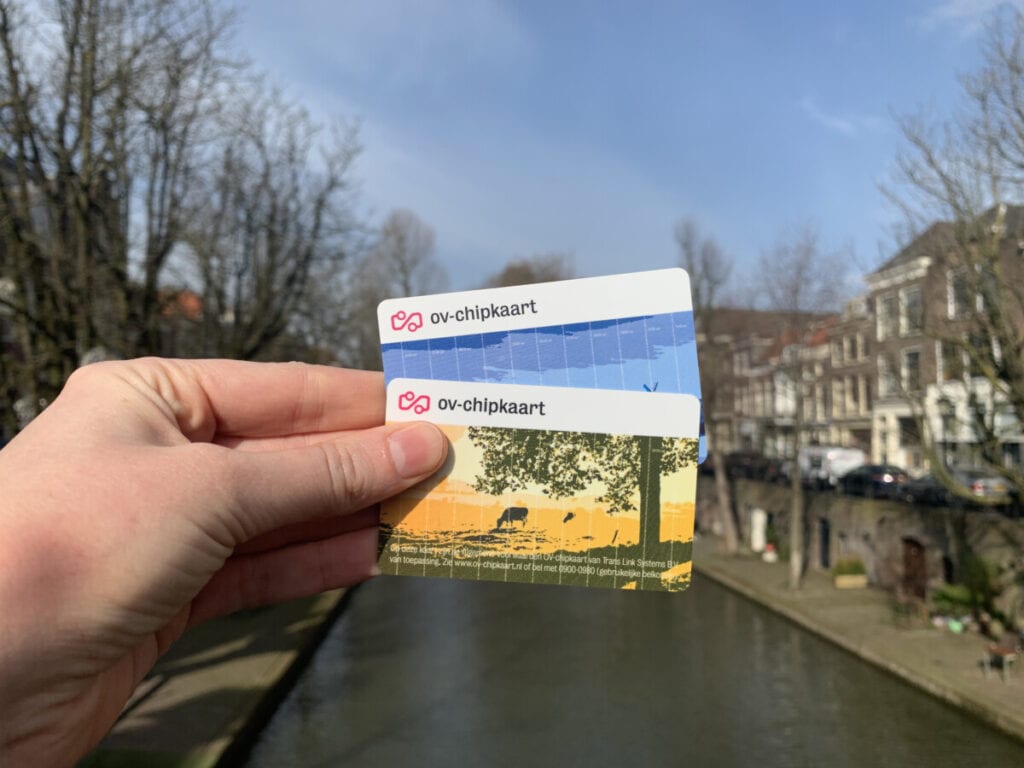
Another great thing with the advantage card is that you can take up to three friends with you. You just load the discount onto their OV chipkaarten and they all get the same discount! How kind of you, NS.
3. Grab a group ticket ( Groepsticket )
For only €7.15 per person, up to seven passengers travelling together to the same destination off-peak can get a ticket to anywhere in the Netherlands.
Basically, the more people that you gather to travel with you (or the more friends you have! 😉), the cheaper it becomes.
Here’s a breakdown of the prices as an example, so you can easily see how cheap it really is:
- Four people = € 9.50 per person
- Five people = €8.40 per person
- Six people = €7.67 per person
- Seven people = €7.15 per person
You can easily order the Groepsticket online , and each person will receive their own personalised ticket. Easy, right?
4. Scour discount websites for cheap Dutch train ticket deals
Another way to get cheap ticket deals is to check the Spoordeelwinkel section of the NS website, which contains new deals every month. These Dutch train ticket deals are linked to specific destinations, such as cities, hotels, or amusement parks.
They also have great tickets for you tourists out there. 🧳
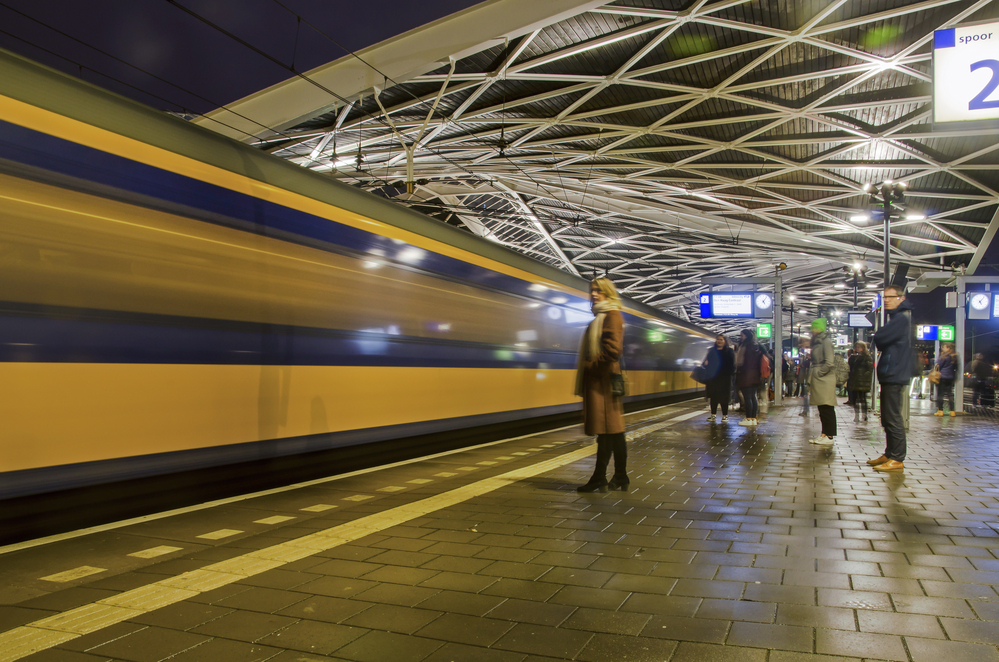
Occasionally, you can get deals for tourist attractions where you can get transport bundled with a hotel, entry fee, or meal fee paid for in one — so remember to keep checking the site!
5. Buy tickets for your kids, pets — and even your bike
Forget about leaving little Fluffy, your 3 screaming children, or your beloved Dutch bike at home. The NS offers special tickets for all three! 👇
Doggy day ticket
You can buy a day dog ticket for just €3.30 but small dogs and other small animals get to travel for free ( wat mooi! ). So it’s probably best not to overfeed your pet if you want a free ride. 😂
You can load this onto your OV chipkaart or with a disposable single-use card.
Children’s ticket
If your kids are tagging along with you, the fab news is that they can travel for free — provided they have their own OV chip cards (€7.50).
Oh, and what if their friends are joining in on the fun? Well, the price stays the same: free!
Of course, some requirements do apply, such as the children involved being between the ages of 4 to 11 and accompanied by someone over the age of 12.
If that sounds like something beneficial for you and your nearest and dearest, don’t forget to purchase the Kids Vrij discount! (You “purchase” it for €0.)
Bike ticket
Ja hoor , you can even take your beloved fiets on the train for €7.50 per day.
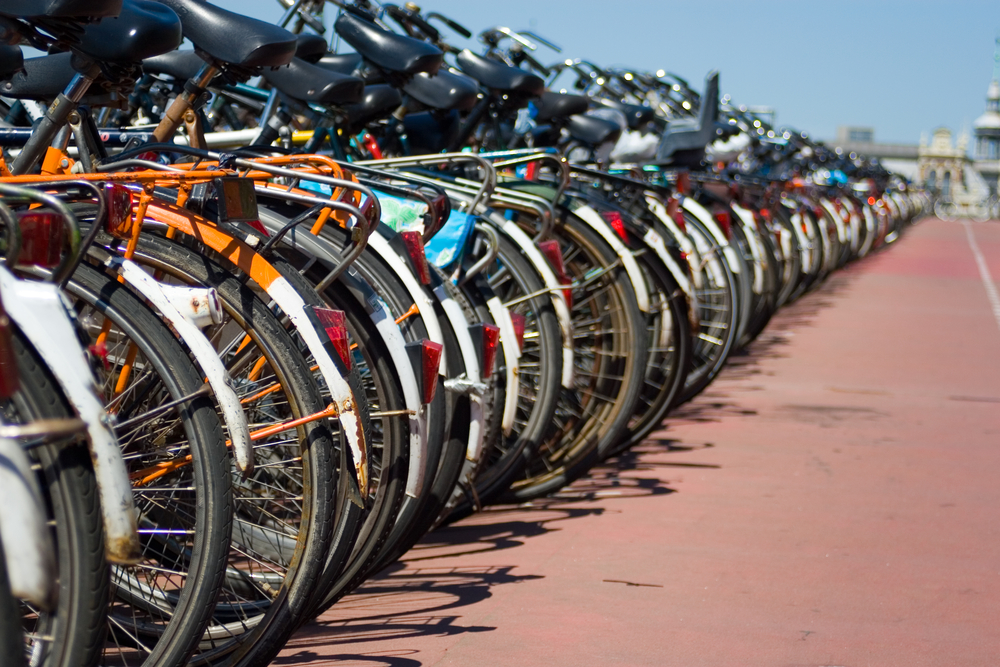
This ticket is only valid during off-peak hours, but it doesn’t matter how long your journey is, it’s still the same price. That way you will never have to part with your bike ever again.
READ MORE | Don’t pay full price! Buy train tickets the Dutch way.
Just load this onto your OV chipkaart or buy a disposable single-use card.
6. Snap up some international discount cards
So, maybe you want a change of scenery from the Netherlands and are looking to explore something new for the day. The good news is, if you have an OV chipkaart, you can travel to Germany, Belgium, and beyond with a handy discount. 🗺️
With an Interrail ticket , for example, you can get a discount of up to 25% on European rail travel.
If you’re determined to do a round trip of Europe during the summer, opting for a €185 Global Pass will give you access to a whopping 33 European countries for a flexible time period that you can set.
Meanwhile, the €51 One Country Pass will give you unlimited access to the rail network to a European country of your choice. Prima !
7. Browse the NS site
Admittedly, the NS deals aren’t always as good as some of the other deals out there. However, from time to time, the NS does advertise some pretty cool deals on their site .
These are mainly city trip deals to other countries, but who wouldn’t like a little day trip to Brussels or Paris this summer? ⛲️
In addition to this, buying a ticket at least four days before your trip will score you a generous 20% discount for rail journeys between Monday and Thursday — and a 10% discount on weekends. It really does ‘pay’ to be an early bird! 😉
What’s the best deal you’ve got on Dutch transport? Let us know in the comments!
Liked it? Try these on for size:
How to get from amsterdam to london in 2024, 16 superb things to do in amersfoort in 2024, 17 unforgettable things to do in leiden in 2024, what do you think, 12 comments.
[…] Hop on board Nederlandse Spoorwegen (NS) train service, for direct links all over the country! What’s that? Tickets are far too expensive? Don’t jump the barrier! Find out the tips and tricks to the cheapest train tickets available! […]
[…] deals in the supermarket as a tourist (unlikely for most), you’re faced with paying full price for train tickets. On top of that, for not having an OV Chipcard, you’re paying an extra euro. Have an OV […]
It was very interesting on the wall of the staircase. :))
[…] (If you’re here to look for cheaper train tickets, this is the perfect time to check our train ticket guide […]
The author forgets to mention that most if not all ns train tickets are etickets and can only be paid for using the iDEAL payment option. This is only available for people with a Dutch bank account. The ns is very unfriendly for foreigners without a dutch bank account, and I always feel robbed.
This is indeed true. More than once I paid with my bank card at the ticketmachine on the station for someone’s ticket in exchange for cash as he/she didn’t have a bank card to pay with. Dutch Railroads (NS) is now experimenting with (check-in – check-out) direct payment with bank card at the gates. But you can pay for online ticket orders by credit card (Visa, Amex, Master Card) according to https://www.ns.nl/klantenservice/betalen/problemen-met-online-betalen.html .
You’d need a Dutch bank account for most (if not all) deals indeed. And a Dutch postal code (well, you can solve that one, of course). And if a local buys the ticket for you, they cannot send it to you (for example, by e-mail – you cannot put it in an attachment or forward via WhatsApp). So it only works if you have a local friend travelling with you (unless I missed something important). The local transportation system is really unkind to foreigners, but it’s a lovely country nevertheless 🙂
In #6 you say “The good news is, if you have an advantage card (the card I mentioned at 1.)” The advantage card is in #2, not #1
Thanks for that – all changed! I didn’t notice and you’re the first person to bring it up, so cheers. 😀
hi thank you
this content its great
The bike ticket is only valid off-peak-hours and not as you claim all day. Hence during peak hours (07.30-09.00 and 16.30-18.30 weekdays) you are NOT allowed to take a non-foldable bike (folded completely) with you in the train with this ticket and you risk a fine.
LEAVE A REPLY Cancel reply
Save my name, email, and website in this browser for the next time I comment.
This site uses Akismet to reduce spam. Learn how your comment data is processed .
Related posts
Latest posts, porn alert buses weren’t the only thing coming at this dutch station, bidding wars and limited supply: here’s why it’s even harder to buy a house in nl, hybrid work in the netherlands: 5 things to know, it's happening, upcoming events, ‘in brilliant light’: marvel at contemporary african art at this exciting new exhibit, cherry blossom season, how to buy a house in the netherlands: this webinar covers it all, how can i get a mortgage in the netherlands this webinar is the first step, considering a bsc in business administration check out nyenrode university’s amsterdam open day, want to elevate your career check out nyenrode university’s open day for a masters in management, king’s day (koningsdag), national remembrance day (dodenherdenking), liberation day (bevrijdigingsdag), mother’s day (moederdag-bloemendag), the latest dutch news. in your inbox., woah, you look pretty good here.
We're constantly hunting for the latest, greatest, and most Dutch spots for our readers. Want your business to reach an unrivalled expat and international audience?
We like you - a lot
© 2023 All Rights Reserved. All material on this website (DutchReview) is strictly copyright and all rights reserved. If you are dissatisfied with the website or any content or materials on it, your sole exclusive remedy is to discontinue your use of the website. The website may provide links to other websites on the Internet, the content of which is not in our control. Whilst every effort has been made to ensure accuracy, the publisher cannot accept responsibility for omissions and errors. If you have found material on this website which is copyrighted by others, please contact the webmaster on this matter in order to have it removed.
Country and language
United Kingdom
United States
Deutschland
@media (max-width: 37.5rem){.css-vo707v{font-size:1.5rem;}} Log in
@media (max-width: 52.5rem){.css-1qvpg8e{font-size:1.375rem;}} no account.
Join Club Eurostar for FREE
- Travelling with Eurostar
- Frequent travellers
- Manage your booking
Frequent or Premium Pass
Please log in to use your subscription pass.
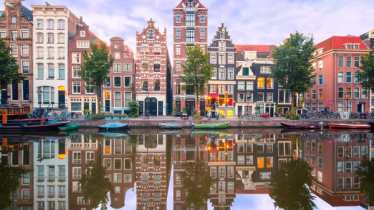
Trains to the Netherlands
Discover direct Eurostar trains from London to Amsterdam and Rotterdam.
City centre
to city centre travel
Go greener with Eurostar
Take the train to reduce your carbon footprint
Arrive relaxed
and ready to explore
Take the train to the Netherlands
There’s so much more to the Netherlands than windmills, tulips and cheese. Renowned for being pancake-flat, the Netherlands is a hotbed of world-class art, exciting culture, and forward-thinking architecture. And now, it’s a doddle to get there from St Pancras International.
And it’s even easier to get home again, with direct trains from Amsterdam Centraal arriving in London in 4 hours 09 minutes while trains from Rotterdam take 3 hours 30 minutes .
If our direct train times don’t suit you on the way home, you can take a Thalys train from Amsterdam Centraal or Rotterdam Centraal to Brussels-Midi/Zuid. When your train arrives in Brussels, you’ll need to go through security and have your passport checked before you hop on a Eurostar train back to St Pancras International.

London to Amsterdam trains
With its canals, cobblestone quays and buzzing art scene. Amsterdam is the perfect city for a weekend of culture.
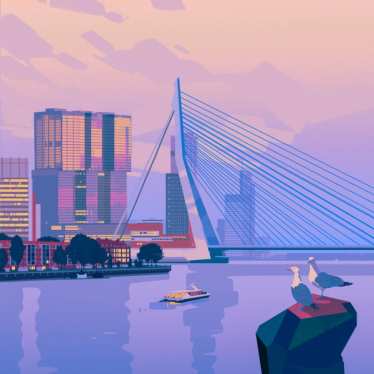
London to Rotterdam trains
With our trains direct from St Pancras International to Rotterdam Centraal, it takes just 3hrs 13 mins to speed from city centre to city centre.

Trains across Europe
Come with us to the heart of Europe's most exciting cities across France, Belgium, the Netherlands, Germany and the UK.

The Perfect Netherlands, Belgium, and Luxembourg Itinerary for 2 Weeks
A re you embarking on a two-week adventure through the landscapes of the Netherlands, Belgium, and Luxembourg soon? You are in for a sweet treat, and we aren’t just talking about the delectable chocolate that Belgium is known for . Storybook towns, picturesque canals, and cultural marvels await you on your journey!
From the canals of Amsterdam to the medieval beauty of Luxembourg City, this Netherlands, Belgium, Luxembourg itinerary is filled with 14 days of unforgettable experiences in the Benelux nations.
About this Netherlands, Belgium, Luxembourg itinerary
A vacation to the Benelux region of Europe, which encompasses the Netherlands, Belgium and Luxembourg is sure to offer culture, beautiful scenery, and a lot of unique experiences.
Benelux is an economic alliance between the three neighboring countries. But Belgium, Luxembourg, and the Netherlands have shared historical ties and cultural similarities, as well. And given their close proximity and the ease of traveling between the three, many people visit the Netherlands, Belgium and Luxembourg on the same trip.
If you are looking to plan a vacation to this region of Western Europe, we have laid out our ideal 2-week Netherlands, Belgium, and Luxembourg itinerary.
How to get around the Benelux Region
Western Europe is well connected by public transportation. You can easily get around the region using mostly trains and buses.
Buying a Eurorail Benelux Pass through Rail Europe would likely save you money if you plan to follow this itinerary.
READ OUR FULL REVIEW OF RAIL EUROPE HERE
If you prefer to road trip in Europe , you can easily get around the three countries by car. However, if you decide to rent a car and drive, be aware that the Netherlands is known for having more cyclists on the road than cars, so be extra cautious and look out for cyclists.
2-Week Netherlands, Belgium, and Luxembourg itinerary in a nutshell
Although this 2-week itinerary for Belgium, Luxembourg, and the Netherlands takes you to all three countries, you won’t get to see everything this region has to offer in such a short time.
You could easily spend 2 weeks in the Netherlands alone seeing all the best places to visit in the Netherlands .
But with limited time, here is a breakdown of our Netherlands, Belgium, Luxembourg itinerary for 14 days. You’ll spend nearly half your time – 6 or 7 days in the Netherlands, and then split your second week between Belgium and Luxembourg.
- Days 1-3 – Amsterdam
Day 4 – Giethoorn
- Days 5-6 – The Hague
- Days 7-8 – Bruges
Day 9 – Ghent
- Days 10-11 – Brussels
Day 12 – Dinant
- Days 13-14 – Luxembourg City
If you have more than 2 weeks in the Netherlands, Belgium and Luxembourg, we’ve included a few extra ideas of places to visit that you can add to your itinerary to customize it for your ideal travel style and tailor it for the length of your trip.
Day-by-Day breakdown of this itinerary for the Netherlands, Belgium, and Luxembourg
Now that you have a general idea of where you’ll spend your time during this itinerary, let’s break down your travels day by day.
Ideally, you will want to fly into one city and out of another to maximize your time in these three countries. We recommend flying into Amsterdam and out of Brussels, although you could also fly out of Luxembourg City and save yourself the 4 hour train ride back to Brussels from Luxembourg.
Day 1 – Amsterdam
WHERE TO STAY IN AMSTERDAM:
- Art’Otel Amsterdam
- Hotel Sint Nicolaas
Your first day you’ll basically be familiarizing yourself with Amsterdam. Whether this is the day you land or your first full day in Amsterdam, you’ll likely be a bit jet lagged and don’t want to plan too much.
Spend this day walking around, stop for a photo at the iconic Damrak , go see Dam Square and the Royal Palace. Be sure to get your first taste of Dutch food by indulging in Stroopwafel and Dutch Pancakes.
With full tummies, spend the rest of your afternoon leisurely exploring the beautiful Jordaan District , home to some of the most famous bridges in Europe .
End your day with an evening Flagship Canal Tour . It’s a great way to relax and see the city from the water.
Day 2 – Amsterdam
After breakfast on your second day in Amsterdam, head directly to the Anne Frank House , where you will tour the hidden home where young Anne Frank and her family hid for 2 years from the Nazis. Be sure to book your tickets in advance because this powerful museum sells out.
From there, head to the Bloemenmarkt on the Singel Canal. This is the city’s famous floating flower market. Every Monday through Saturday, vendors sell colorful tulips, both fresh and wooden, as well as Dutch souvenirs and other trinkets. Unless you are visiting the Netherlands in spring, this is the closest you’ll get to seeing the gorgeous tulips the country is known for.
After the Bloemenmarkt, grab some lunch and head to the museum district, where you’ll find Rijksmuseum , the Van Gogh Museum and Vondelpark . Like for the Anne Frank House, if you want to visit either of Amsterdam’s most popular art museums, you’ll want to book your tickets ahead of time .
Day 3 – Day trip to Zaanse Schans and Volendam
Your third day on this Benelux itinerary will take you to two of the most popular day trip destinations from Amsterdam .
Your first stop will be the charming windmill village of Zaanse Schans .
Located just 15-20 minutes from Amsterdam Centraal by train, there are lots of fun things to do in Zaanse Schans like the Verkade Chocolate Experience at the Zaans Museum , touring a working cheese farm, and going inside a working Dutch windmill.
After a lovely morning in Zaanse Schans, grab lunch and then make your way to Volendam. Volendam is a quaint fishing village about 20 kilometers north of Amsterdam.
You’ll want to spend some time strolling through the cute streets in the oldest part of the village center. Wander along the harbor, admiring the view and taking in the atmosphere in the town, and stop into one of the restaurants to try smoked eel, a specialty in Volendam.
If you’re looking to commemorate your trip, you can also have your photo taken in traditional Dutch costumes, including wooden clogs! While it may be considered a bit touristy, it is one of the best things to do in Volendam !
While you can get to both Zaanse Schans and Volendam by public transport, you have to take the train back to Amsterdam from Zaanse Schans and then transfer to a bus to go to Volendam. This is one of those instances where a guided tour works best and saves you about an hour of commute time.
WHERE TO STAY IN GIETHOORN:
- De Dames Van De Jonge Hotel
- Gieters Mooist
A day trip to Giethoorn from Amsterdam is a wonderful way to spend your fourth day in the Netherlands. However, if you want to experience the “village with no roads” without crowds of other visitors, we recommend you spend one night in Giethoorn.
Getting to Giethoorn takes a bit of effort, as you’ll either have to rent a car, book a guided tour , or have to take a train to Zwolle or Steenwijk and then transfer to a bus. If you are traveling by public transport, it will take you at least 2 hours to get to Giethoorn.
Once there, you’ll want to rent your own whisper boat and let yourself get lost in the enchanting canals that wind around thatched-roof homes, beneath tall canopies of trees, and under small pedestrian bridges. It is such a peaceful and serene experience, particularly after leaving the bustling streets of Amsterdam.
Day 5 – The Hague
WHERE TO STAY IN THE HAGUE: Babylon Hotel
Whether you spend the night in Giethoorn or head back to Amsterdam on day four, on your fifth day on your Netherlands, Belgium, Luxembourg itinerary, you’ll want to pack up and head to The Hague.
The third largest city in the Netherlands and the seat of power for the Dutch Royal Family, there are a lot of things to do in The Hague for families .
Spend your first day exploring the Old City, Binnenhof Castle , and visiting Madurodam , a park with miniature replicas of Dutch buildings and landmarks.
Day 6 – The Hague (or a day trip to Rotterdam, Delft, or Gouda)
On day six, spend a fun day at the beach, walking along the Scheveningen Pier , ride the ferris wheel , and visit the SEA Life Aquarium .
If the beach isn’t your scene or you’re visiting during the cold months, you can easily day trip to Rotterdam to see the Cube Houses, visit the charming city of Delft, known for their ceramics that make great souvenirs from the Netherlands, or visit the town of Gouda – the birthplace of one of the most famous Dutch cheeses.
Day 7 – Bruges
WHERE TO STAY IN BRUGES:
- Hotel de Castillion
- Hotel Het Gheestelic Hof
On day seven, bid farewell to the Netherlands and take the morning train from Den Haag Centraal to Bruges, Belgium . Your train ride will take approximately 3 hours, with a couple transfers in cities like Rotterdam, Antwerp and/or Ghent.
Many people choose a day trip to Bruges from Ghent or Brussels, but this enchanting city is well worth spending a night or two. It is especially magical at night and early in the morning before the day trip crowds descend.
However, if you prefer to stay in fewer hotels and pack up and move around less, you can easily take day trips to both Bruges and Ghent from Brussels or even book a guided day tour to both cities .
Spend time wandering through the colorful Market Square , climb the Belfry for awesome views of the city, visit the Basilica of the Holy Blood to see the holy relic believed to contain the blood of Jesus Christ.
After a leisure lunch in Market Square, take a canal cruise and admire the swans at Minnewater Lake . There are so many things to do in Bruges, you could definitely spend a couple days here.
Day 8 – Bruges
On day 8, wake up and walk the cobbled streets of the historic center Bruges before they get too crowded. This is the perfect time to take photos of this UNESCO World Heritage site that looks like a page from a storybook.
You’ll want to wander through the serene Begijnhof , currently home to the Benedictine nuns, but previously was the home of beguines – a group of widowed women who chose not to remarry and live a holy life in a setting similar to a convent.
After a walk through the Begijnhof, stop in for Belgian waffles somewhere, and then take a group tour De Halve Maan Brewery – the only brewery in the world that transports its beer through a pipeline to the bottling plant. You’ll learn how their beer is made, transported, and then of course, you’ll want to sample one!
Finally, visit the Church of Our Lady . This beautiful church contains one of Michelangelo’s most famous sculptures, Madonna and Child .
Spend your evening taking in the beauty of this town before you have to say goodbye. Follow your nose into any of the countless chocolate shops and buy whichever truffles your heart desires! Or, take a chocolate making class and learn the art of making the country’s famous chocolates.
WHERE TO STAY IN GHENT:
- Hotel Harmony
- Hotel Carlton
Ghent is located about halfway between Bruges and Brussels. It is only 22 minutes by train.
Begin your morning at Graslei and Korenlei, picturesque canals lined with historic guild houses that reflect on the water. Wander through the cobblestone streets and discover landmarks such as Saint Bavo’s Cathedral , home to the famous Ghent Altarpiece.
Make your way to the medieval fortress, Gravensteen Castle . This castle, surrounded by a moat, will make you feel like you’ve been transported back in time to an age of knights and court jesters.
For lunch, indulge in local delicacies at one of the many eateries in the Patershol neighborhood, known for its quaint atmosphere and diverse culinary offerings. Then spend your afternoon at the Museum of Fine Arts or take a leisurely boat tour along the canals to admire Ghent’s architecture from a different perspective.
As the day winds down, enjoy the sunset over the city then finish your day with dinner at one of the riverside restaurants, savoring Belgian specialties like moules-frites.
Day 10 – Brussels
WHERE TO STAY IN BRUSSELS: Ibis Hotel Brussels
On day 10 of your 2-week Netherlands, Belgium, Luxembourg itinerary, you’ll take a short train ride to the Belgian capital of Brussels where you’ll spend 2 days .
After dropping your luggage off at the hotel, take a stroll through the Galeries Royales Saint -Hubert before making your way to Grand Place.
Grand Place is Brussels’ main public square. Surrounded on all four sides with beautiful historic buildings crowned with opulent gold accents, the square is not only picturesque, it is typically teeming with activity.
A short walk from the square, you’ll find one of Europe’s most famous statues – Manneken Pis . Pause to admire this 24-inch statue of a little boy peeing in a fountain before continuing your journey through the city. Be sure to stop somewhere for Belgian Frites or waffles and shop for your Belgian souvenirs . You won’t tire of these two foods in Belgium!
Take time finding the numerous murals of comics scattered around the city center. You can buy a fun digital game to guide you through Brussel’s Comic Book Route – escape room style!
Make your way to Mont des Arts or head to Place Sainte-Catherine for dinner. This plaza is another area lined with restaurants and always bustling with activity.
Day 11 – Brussels
On day 11, you’ll want to take a brief walk to Mont des Arts, if you didn’t visit it on your first day in Brussels. This is one of the most photographed spots in Brussels, and if you get there in the morning, the historic site, which sits between Grand Place and the Royal Palace, won’t be near as crowded.
If you’re visiting from July through late September, head to the Royal Palace next. You can only tour the official palace during those months, as it is the administrative offices of the Belgian monarchy and closed to the public the rest of the year.
Across from the Royal Palace, Parc de Bruxelles , is the largest green space in the city and is a beautiful, shady park with walking trails, fountains, and outdoor cafes where you can stop for a mid-morning snack.
In the afternoon, head to the Atomium . It is about a 15 minute metro ride from the city center. This massive public art sculpture shaped like an atom is actually a building. You’ll definitely want to book tickets to go inside , as the interior is often compared to the inside of a spaceship.
After visiting Atomium, head to Miniature Europe . Like Madurodam, this miniature world has 350 tiny replicas of buildings and monuments from 90 different European cities.
WHERE TO STAY IN DINANT: Les Terrasses de Sax
Your time in Belgium is winding down. On day 12, head east to Dinant. When you arrive at the train station, stroll along the riverbank and cross the Charles de Gaulle Bridge adorned with saxophones, paying homage to Adolphe Sax, the inventor of the saxophone who was born in Dinant.
Stop off at your hotel to store your bags, before heading to the Citadel of Dinant . Perched on a rocky outcrop overlooking the Meuse River, the citadel provides a stunning introduction to the town below.
Continue your day by visiting the Collegiate Church of Notre-Dame , an impressive Gothic masterpiece with its onion-domed bell tower.
Enjoy a leisurely lunch at one of the riverside cafes while taking in the scenic surroundings.
In the afternoon, cruise along the Meuse River or visit the Maison de Monsieur Sax , a museum dedicated to the life and work of Adolphe Sax.
As the sun sets, find a cozy spot along the river to enjoy the town’s illuminated beauty on your last night in Belgium.
Day 13 – Luxembourg City
WHERE TO STAY IN LUXEMBOURG CITY:
- Hotel le Place d’Armes
- Park Inn by Radisson
Your final two days on this Netherlands, Belgium, Luxembourg itinerary will be spent in the tiniest country in the Benelux region. Take the train from Dinant to Luxembourg city where you will spend your first day exploring the medieval charm of the beautiful, clean, and safe capital.
After getting your luggage situated at your hotel, take a leisure stroll and cross the Pont Adolphe , one of the most picturesque bridges in the city. From the bridge, you’ll have a great view of Constitution Square and the two-tiered city in the background.
Walk by and admire Constitution Square and the Monument of Remembrance before checking out Place d’Armes . This central square in the new city is a great place to grab breakfast or lunch, depending on what time you arrive in Luxembourg City.
You can tour the Grand Ducal Palace if you are visiting during summer. Like in Brussels, the palace is only open during certain times of the year. You’ll also want to stop inside Notre Dame Cathedral and explore the crypt below before heading down to the lower level of the city and into the casemates.
Touring the Bock Casemates is one of the best things to do in Luxembourg City . The new city is built on a network of underground tunnels called the casemates. These tunnels date back to 1745 when medieval fortifications were built as a stronghold to protect the city.
After exploring the casemates, continue to the lower portion of the city which is the historic quarter of Luxembourg city. This preserved area is a great place to visit both during the day or night.
Day 14 – Luxembourg castles day trip
On your final day of your Netherlands, Belgium, Luxembourg itinerary, you’ll head out of the city on a guided day tour to see the beautiful nature and some of the castles that the small country is known for.
Explore scenic trails, vast forests and ancient ruins before heading to Vianden Castle . Located in the northern part of the country along the German border, this imposing castle overlooks the town of Vianden and is one of the largest fortified castles west of the Rhine River. Set against Luxembourg’s stunning natural scenery, it is often considered one of the most beautiful castles in the world.
After your day trip, head back to Luxembourg City for a final night, or to make your way back to Brussels for a flight out the next morning. Wherever you spend your final night, you’re sure to sit back and reflect on all the experiences and memories made on your trip!
Best time of year to travel to the Benelux region
The Benelux region is a great year-round destination. The holiday markets, particularly in Belgium and Luxembourg make it a great place to spend Christmas in Europe .
Of course, spring a popular time to visit as the weather becomes milder, and the landscapes burst into vibrant colors. Tulip season in the Netherlands, particularly in April, is a highlight.
Summer, which is when we personally visited, is the peak tourist season, and it brings warm temperatures and longer days. It’s ideal for exploring the cities and enjoying outdoor cafes and activities.
Fall offers crisp weather, a jacket will be needed, but the crowds begin to thin out compared.
Tips for following this Belgium, Luxembourg, Netherlands itinerary
If you like this Netherlands, Belgium, Luxembourg itinerary for 2 weeks, here are a few travel tips that will make following this travel route easier.
Travel with minimal luggage
If you plan to move around a lot and switch hotels every few days, it is imperative that you travel with minimal luggage. We typically carry backpacks like this one or a carry-on rolling bag, like this one .
Having smaller, more portable bags makes getting on and off trains and navigating to your hotels from the train stations much easier.
Book hotels close to the train stations
We typically book hotels that are within a 10 minute walk from the train station. This allows us to drop off our luggage at our hotel shortly after arriving in a new city and begin exploring luggage-free.
Store luggage at your hotel when you arrive in a new location
Most hotels will allow you to store your luggage for the day if you arrive before your room is ready to check in. Keep in mind, if you book an Airbnb or a guest house, this isn’t always an option. So, that is something to consider when selecting your accommodations.
Don’t like moving around as much? Consider day trips
If the idea of packing up and switching hotels every few days sounds exhausting and unappealing you can still follow this basic itinerary and limit your hotels to 2 or 3.
The Hague and Giethoorn can both be done as day trips from Amsterdam. So, you could spend the first 6-7 nights in Amsterdam and take short journeys out to explore much of the small country of the Netherlands.
Best guided day trips from Amsterdam
- Zaanse Schans and Volendam
- Keukenhof Tulip Farm (spring)
- The Hague, Rotterdam and Delft
Additionally, you could spend another 7 days in Brussels and take day trips to Bruges, Ghent, and even Dinant and Luxembourg City, although that is admittedly, a long day trip.
Best guided day trips from Brussels
- Bruges and Ghent
- Bruges only
- Dinant and Luxembourg
Other places to visit if you have more time
If you have additional time, you could easily add cities like Rotterdam, Utrecht, and Antwerp to your itinerary. There are so many great places to visit in the Netherlands , Belgium and Luxembourg!
Is a 2 week trip to the Netherlands, Belgium and Luxembourg enough?
Two weeks is a good amount of time to see the highlights on this Netherlands, Belgium, Luxembourg itinerary, however the amount of time you’ll have in each country will be limited.
If you love museums and culture, you could definitely spend a lot more time in the large cities exploring the many museums offered. History lovers could spend more time in Belgium exploring the multiple World War monuments and battlefields.
Additionally, if you simply love to travel slowly, have more time to relax, sleep in, take your kids to playgrounds, join walking tours, and do less in a day, you could either extend this itinerary to allow more time in each destination, or dedicated the full 2 weeks to one single country, like the Netherlands.
If you’re limited to 2 weeks in the Netherlands, Belgium and Luxembourg, just prioritize the places and experiences that matter most to you.
Do you have a question or comment about this Netherlands Belgium and Luxembourg itinerary? We’d love to hear from you. Leave your thoughts or your own ideas in the comments below.
Like it? Pin this Belgium, Netherlands, Luxembourg itinerary to save it for later!
Did you know….
When you make a purchase or book hotels, tours, or other travel services, through our links, we receive a small commission, at no extra cost to you. We only EVER recommend service providers, websites, or products we personally use when booking our own travels. Your support enables us to keep producing helpful travel content. Thank you!
- Book a HOTEL
- Book a RENTAL CAR
- Purchase TRAVEL INSURANCE
- Book guided tours or excursions at GET YOUR GUIDE or VIATOR
- Book TRAIN TRAVEL IN EUROPE
- Book BUS TICKETS IN EUROPE
- Book a FERRY IN EUROPE
- Book a DESTINATION PHOTOGRAPHER
- Buy TRAVEL GEAR on Amazon
- Buy a PRIORITY PASS MEMBERSHIP for airport lounge access
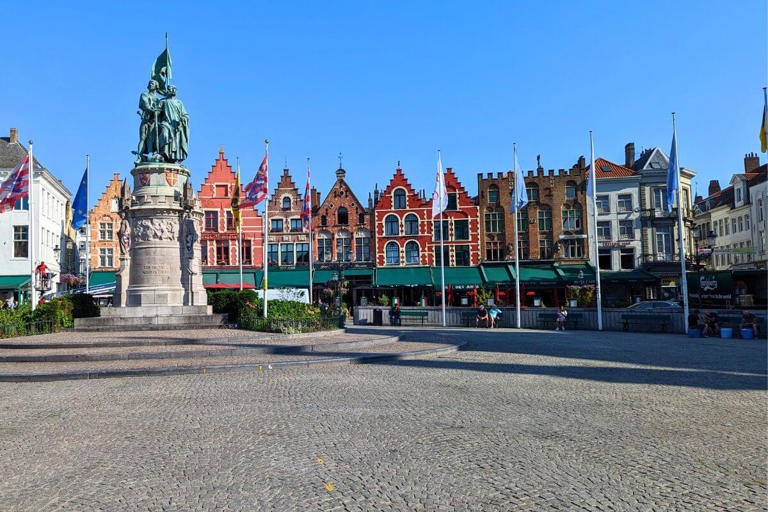

IMAGES
VIDEO
COMMENTS
Holland Travel Ticket. Welcome to Holland! Discover Holland with unlimited public transport for only €48. More information. ... Easy if you travel on the train infrequently! Discover how it works. NS-Business Card. Sometimes you work at the office, and sometimes you travel from appointment to appointment. View our business products. Discover ...
Railrunnerkaartje (Rail Runner) This ticket allows children to travel by train for just €2.50 each. It's valid all day, on journeys on InterCity Berlin, ICE International and Intercity direct services. Children up to three years old can travel for free if travelling on an adult's lap.
If I had to name the most annoying part of taking a train in the Netherlands, this would be it. If you're using an OV chipkaart, the balance on your card needs to be at least €20 before you can step on board a train. Thankfully, for trams and buses which you access with the same card, the necessary balance is a lot lower, just €4.
Step 1: Getting a Train Ticket. There are many different train tickets, like one-way tickets and day returns. In general, train fares are fixed, but some discounts are available, like group tickets, and other discounts like "Book Early and Save" when you purchase in advance and travel outside of rush hour.
The train network in the Netherlands and major connections. You can travel between most train stations in the Netherlands in under 3 hours on an NS International train, making trains a convenient and affordable option for travel within the country. See below for some of the most popular Netherlands train routes: Popular train journeys in the ...
Train Fares in the Netherlands. Domestic rail fares in the Netherlands are fixed and depend on distance travelled. You can always just turn up at the station and purchase a ticket at the standard fare. The standard fare covers travel in 2nd class carriages. A 1st class ticket costs about 67% more than the equivalent 2nd class fare.
The Netherlands by train: easy and comfortable. The train could very well be the most enjoyable means of transport for your travels through the Netherlands. No matter your destination in our country, the train will get you there. From Amsterdam to Groningen, Maastricht to The Hague: just hop aboard! Take a look here for all the top tips.
Rail Travel Transport Netherlands Railways Guide - Dutch Train Travel Tips. December 22, 2023. The railway network in the Netherlands is mainly operated by the state-owned company NS, Nederlandse Spoorwegen. With a track length of almost 3,200 km covering some 401 stations, there are up to 750,000 passengers normally using the train every day.
How To Use A Train Ticket In Holland. After purchasing your ticket (or topping up your OV-card), you can go to the platforms (" spoor " in Dutch). Before being able to get there, you have to check in. You simply tap your ticket or OV-card onto the "check-in" spot before the gates, and they will open for you.
Explore The Netherlands easily by using multiple means of public transport like train, bus, tram, or metro. Purchase your e-ticket for your journey in the 9292 app. We will explain how to purchase an e-ticket and inform you about which public transport companies are included. If you don't have the 9292 app yet search for '9292' in the app store ...
To the Netherlands by train . Choose a comfortable, fast and sustainable journey by train. NS International connects Europe with all major cities in The Netherlands. Make sure you visit Amsterdam, a vibrant city that invites exploration. Immerse yourself in a city that revels in culture and discover the many tourist attractions Amsterdam has to ...
The Holland Travel Ticket is in effect a one-day national travel pass that can be used by visitors to The Netherlands. It covers all public transport including the trains, metro / subways, trams and buses. The Off Peak version is cheaper, but it can't be used in the mornings between 06:30 and 09:00.
Domestic Rail Passes in the Netherlands. NS Day Travel Card (NS Dagkaart) - This allows 1 day's unlimited travel on any NS train in the Netherlands. It costs €58.80 (2nd class) or €99.96 (1st class) in 2024. It can be purchased online in advance or added to an OV-chip card.
Train travel in the Netherlands is a thing of beauty! You can use the official rail site to look up itineraries and ticket prices. Intercity train tickets around Holland are cheap and cost between 10-20 EUR, though for super short distances, they can be as little as 5 EUR. Amsterdam to Rotterdam is 11 EUR and takes 40 minutes while Amsterdam to ...
Railrunnerkaartje (Rail Runner) This ticket allows children to travel by train for just €2.50 each. It's valid all day, on journeys on InterCity Berlin, ICE International and Intercity direct services. Children up to three years old can travel for free if traveling on an adult's lap.
It takes just 3 hours 52 minutes to get to Amsterdam Centraal, and only 3 hours 13 minutes to get to Rotterdam Centraal. And it's even easier to get home again, with direct trains from Amsterdam Centraal arriving in London in 4 hours 09 minutes while trains from Rotterdam take 3 hours 30 minutes. If our direct train times don't suit you on ...
3. Grab a group ticket ( Groepsticket) For only €7.15 per person, up to seven passengers travelling together to the same destination off-peak can get a ticket to anywhere in the Netherlands. Basically, the more people that you gather to travel with you (or the more friends you have! ), the cheaper it becomes.
Travel planner. Current situation on the tracks. Planned engineering work. Travelling with NS. Bringing a bicycle onto the train. All travel information. NS-app. Buy traintickets online. Up to date travel information.
It takes just 3 hours 52 minutes to get to Amsterdam Centraal, and only 3 hours 13 minutes to get to Rotterdam Centraal. And it's even easier to get home again, with direct trains from Amsterdam Centraal arriving in London in 4 hours 09 minutes while trains from Rotterdam take 3 hours 30 minutes. If our direct train times don't suit you on ...
Benefits. Travel by train, bus, tram and metro throughout the Netherlands for a whole day.; Buy an off-peak Holland Travel Ticket for € 48 and travel with it on weekdays, except between 06:30 and 09:00. Valid all day at weekends and public holidays. Or choose a Holland Travel Ticket, which allows you to travel for € 70 by train, bus, tram and metro any day of the week, including peak hours.
On day seven, bid farewell to the Netherlands and take the morning train from Den Haag Centraal to Bruges, Belgium. Your train ride will take approximately 3 hours, with a couple transfers in ...
Step 1: Go to a gate displaying the 'scan ticket' symbol. Step 2: Hold the barcode against the illuminated area to your right. Step 3: The gate opens allowing you to enter or leave the station. Purchase a ticket online now Read more about travelling with a mobile ticket. Purchasing a ticket online is easy, quick and cheaper!